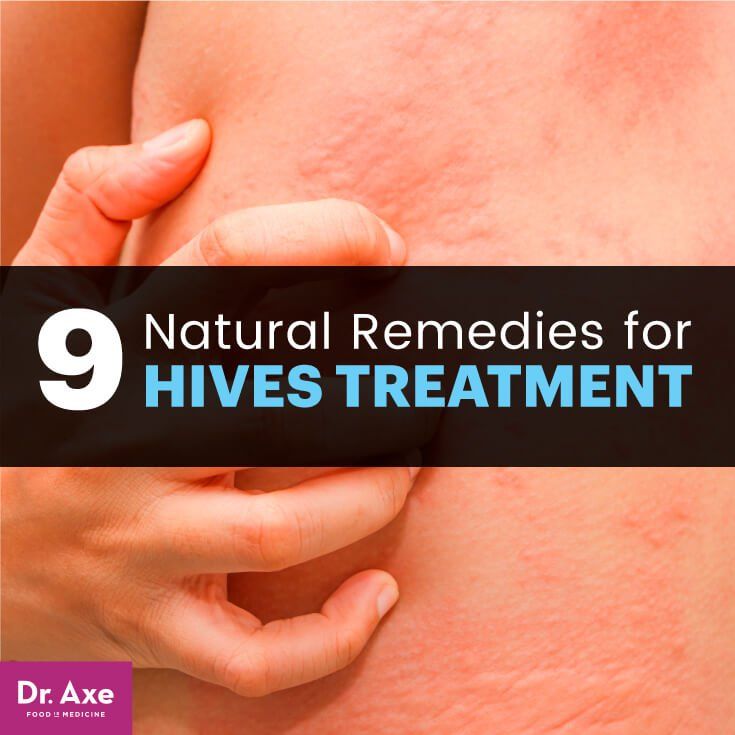Hive rash on arm. Hives (Urticaria): Causes, Symptoms, and Effective Treatments
What are hives and what causes them. How long do hives typically last. What are the most common symptoms of hives. What self-care measures can help relieve hives. When should you seek medical care for hives. What treatments might a doctor prescribe for hives.
Understanding Hives: An Overview of Urticaria
Hives, medically known as urticaria, is a common skin condition characterized by an itchy rash of pink to red bumps that can appear and disappear anywhere on the body. These welts typically last for a few hours, up to 24 hours, before fading away. As older hives disappear, new ones may emerge in different areas.
Medical professionals categorize hives into two main types:
- Acute hives: New or periodic episodes lasting fewer than 6 weeks
- Chronic hives: Periodic episodes persisting for more than 6 weeks
While many individuals experience a single episode of acute hives that resolves within days or weeks, some may suffer from chronic hives that recur intermittently for years. Interestingly, in cases of chronic hives, the underlying cause is often never identified.
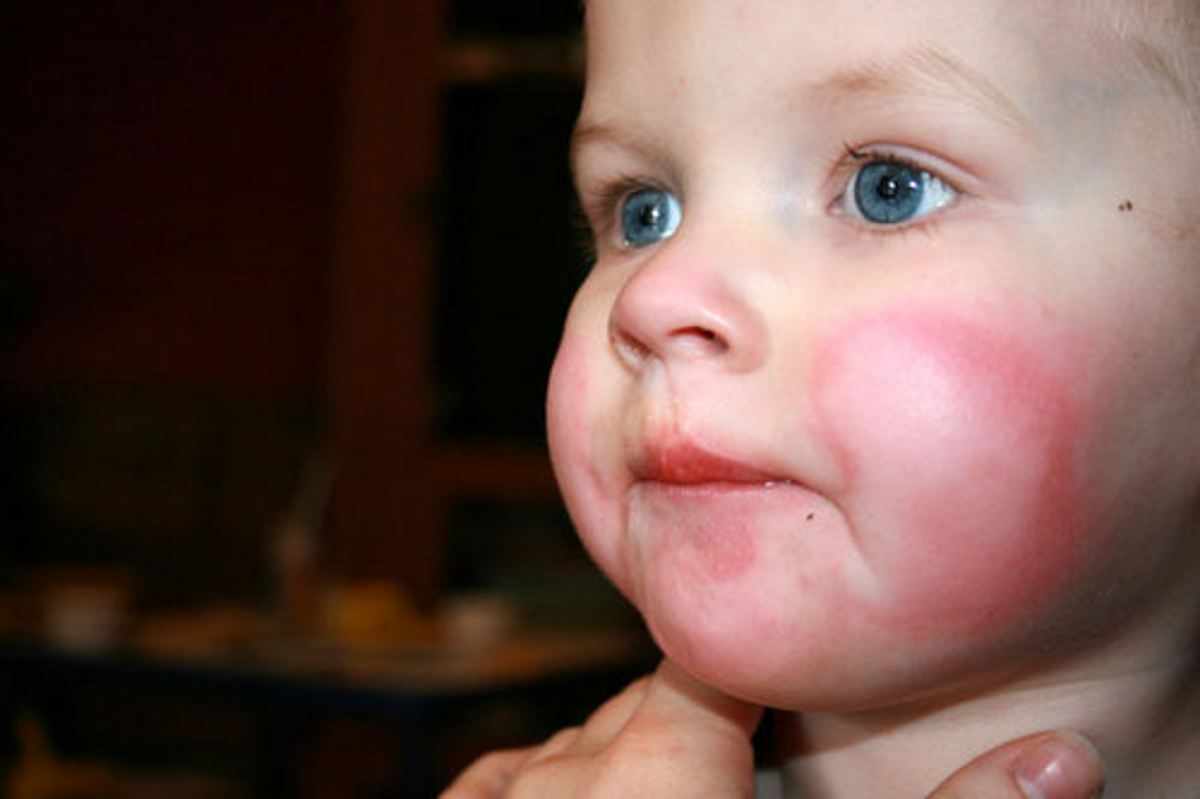
What triggers hives?
Hives can be triggered by a wide range of factors, including:
- Medications (e.g., aspirin, ibuprofen, naproxen, narcotic painkillers, antibiotics)
- Infections (viral, bacterial, or fungal)
- Environmental allergies (insect bites, pollen, mold, animal dander)
- Physical exposures (heat, cold, water, sunlight, pressure)
- Medical conditions (certain blood diseases and cancers)
- Food allergies (e.g., strawberries, eggs, nuts, shellfish)
- Stress
In many cases, despite extensive testing, the exact cause remains unidentified. This is referred to as idiopathic urticaria. Approximately 50% of idiopathic urticaria outbreaks are believed to be caused by an autoimmune reaction, where the person’s own immune system triggers the hives.
Who is at Risk for Developing Hives?
Hives can affect people of all ages, races, and genders. However, certain groups may be more susceptible:
- Acute hives are most common in children and young adults
- Chronic hives are more frequently observed in females, particularly middle-aged women
The prevalence of hives is significant, with estimates suggesting that up to 20% of the population may experience them at some point in their lives.

Are certain individuals more prone to hives?
While hives can affect anyone, some factors may increase the likelihood of experiencing them:
- Having a history of allergies
- Experiencing high levels of stress
- Having certain medical conditions, such as thyroid disorders or lupus
- Being female, particularly for chronic hives
Recognizing the Signs and Symptoms of Hives
Hives can manifest in various ways, but there are some common characteristics to look out for:
Where do hives typically appear?
The most common locations for hives include:
- Trunk
- Upper arms or upper legs
- Hands and feet
- Face
What do hives look like?
An individual hive appears as a well-defined pink-to-red swelling, ranging in size from 2 mm to over 30 cm. Some lesions may develop a lighter center. Hives usually appear in groups or batches and are notoriously itchy.
How long do individual hives last?
Individual hives typically disappear within 24 hours, though new lesions may continue to develop, prolonging the overall episode.

What is dermographism?
Dermographism is a unique type of urticarial reaction that appears within minutes of scratching the skin. The resulting rash usually presents in a straight line pattern and is often indicative of sensitive skin.
Can hives cause swelling in other parts of the body?
Yes, hives can sometimes be accompanied by swelling of the eyes, mouth, hands, feet, or genitals. This swelling, known as angioedema, typically resolves within 24 hours but can be severe and potentially life-threatening if it affects the airway.
Self-Care Measures for Managing Hives
If you’re experiencing mild hives, several self-care strategies can help alleviate symptoms:
- Take cool showers to soothe the skin
- Apply cool compresses to affected areas
- Wear loose-fitting clothes to minimize irritation
- Avoid strenuous activity that may exacerbate symptoms
- Use over-the-counter antihistamines such as diphenhydramine or loratadine
How can you identify and avoid hive triggers?
To prevent future outbreaks, it’s crucial to identify potential triggers:
:max_bytes(150000):strip_icc()/mast-cell-activation-overview-4583920_final-e0d23ecb82b44e01a6e8ae3536571c76.png)
- Keep a diary of foods, activities, and environmental factors preceding hive outbreaks
- Pay attention to any new foods or medications introduced before the onset of hives
- Consider allergy testing to identify specific triggers
- Avoid known triggers once identified
When to Seek Medical Care for Hives
While many cases of hives can be managed at home, certain situations warrant medical attention:
When should you call emergency services?
Call 911 immediately if you experience:
- Lightheadedness
- Difficulty breathing
- Trouble swallowing
These symptoms may indicate a severe allergic reaction (anaphylaxis) and require immediate medical intervention.
When should you consult a doctor for non-urgent hives?
See your doctor if:
- Hives don’t improve with home treatment
- Hives persist for more than a few days
- You experience frequent or recurring episodes of hives
What information should you prepare for your doctor’s visit?
Before visiting your doctor, gather the following information:
- Note any potential triggers you’ve observed
- Observe if your hives worsen or improve with exposure to heat, cold, pressure, or vibration
- Prepare a list of all medications, supplements, and herbal remedies you’ve taken recently
- Recall any recent illnesses, as some conditions or their treatments can trigger hives
Medical Treatments for Hives
When self-care measures aren’t sufficient, your doctor may recommend various treatments to manage hives:

How do doctors diagnose hives?
To confirm a diagnosis of hives and identify potential causes, your doctor may:
- Take a detailed medical history
- Perform a physical examination
- Order blood work, urine tests, or X-rays if necessary
What medications might a doctor prescribe for hives?
Common medications for hives include:
- Antihistamines: Both sedating (e.g., hydroxyzine, diphenhydramine) and non-sedating (e.g., cetirizine, loratadine) options
- Oral corticosteroids: For severe cases or when antihistamines alone are ineffective
- Anti-inflammatory medications: To reduce swelling and itching
- Immunosuppressants: For chronic cases that don’t respond to other treatments
Are there any advanced treatments for chronic hives?
For persistent cases of chronic hives, doctors may consider:
- Omalizumab: A biologic medication that can be effective for chronic hives
- Cyclosporine: An immunosuppressant used in severe cases
- Phototherapy: Light therapy that may help some patients with chronic hives
Living with Hives: Long-Term Management Strategies
For individuals dealing with recurring or chronic hives, developing long-term management strategies is crucial:
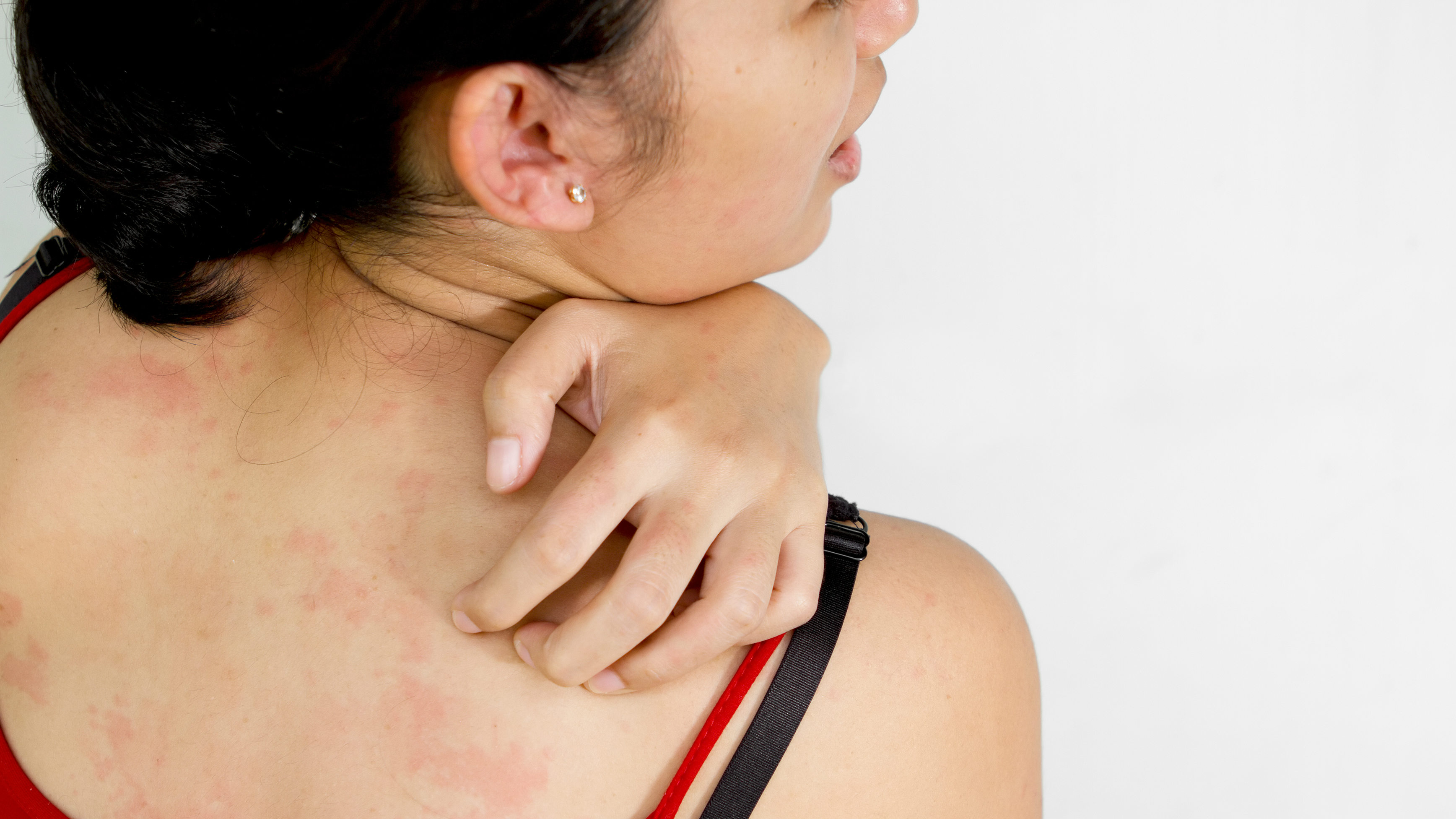
How can you minimize the impact of hives on daily life?
Consider the following approaches:
- Identify and avoid triggers when possible
- Develop stress management techniques, as stress can exacerbate hives
- Maintain a consistent skincare routine to keep skin healthy and less prone to irritation
- Wear loose, breathable clothing to minimize skin irritation
- Keep antihistamines on hand for quick relief when needed
What lifestyle changes can help manage chronic hives?
Implementing certain lifestyle changes may help reduce the frequency and severity of hive outbreaks:
- Maintain a healthy diet rich in anti-inflammatory foods
- Stay hydrated to support overall skin health
- Exercise regularly, but be mindful of sweat-induced hives
- Get adequate sleep to support immune function
- Consider relaxation techniques such as meditation or yoga to manage stress
How can you cope with the psychological impact of chronic hives?
Living with chronic hives can be emotionally challenging. Consider these strategies:

- Join support groups to connect with others experiencing similar challenges
- Seek counseling or therapy if hives are causing significant distress or anxiety
- Practice self-care and prioritize activities that bring joy and relaxation
- Educate friends and family about your condition to foster understanding and support
Investigating Rare Causes of Hives
While most cases of hives are benign and easily managed, in rare instances, they may be a sign of underlying conditions that require further investigation:
Can hives be a symptom of autoimmune diseases?
Yes, in some cases, chronic hives may be associated with autoimmune conditions such as:
- Thyroid disorders
- Lupus
- Rheumatoid arthritis
- Celiac disease
If hives persist or are accompanied by other symptoms, your doctor may recommend testing for these conditions.
Are there any rare but serious causes of hives?
While uncommon, hives can occasionally be a symptom of more serious conditions, including:
- Certain types of cancer, particularly lymphomas
- Hepatitis or other liver diseases
- Vasculitis (inflammation of blood vessels)
- Rare genetic disorders affecting the immune system
These possibilities underscore the importance of seeking medical evaluation for persistent or unusual cases of hives.
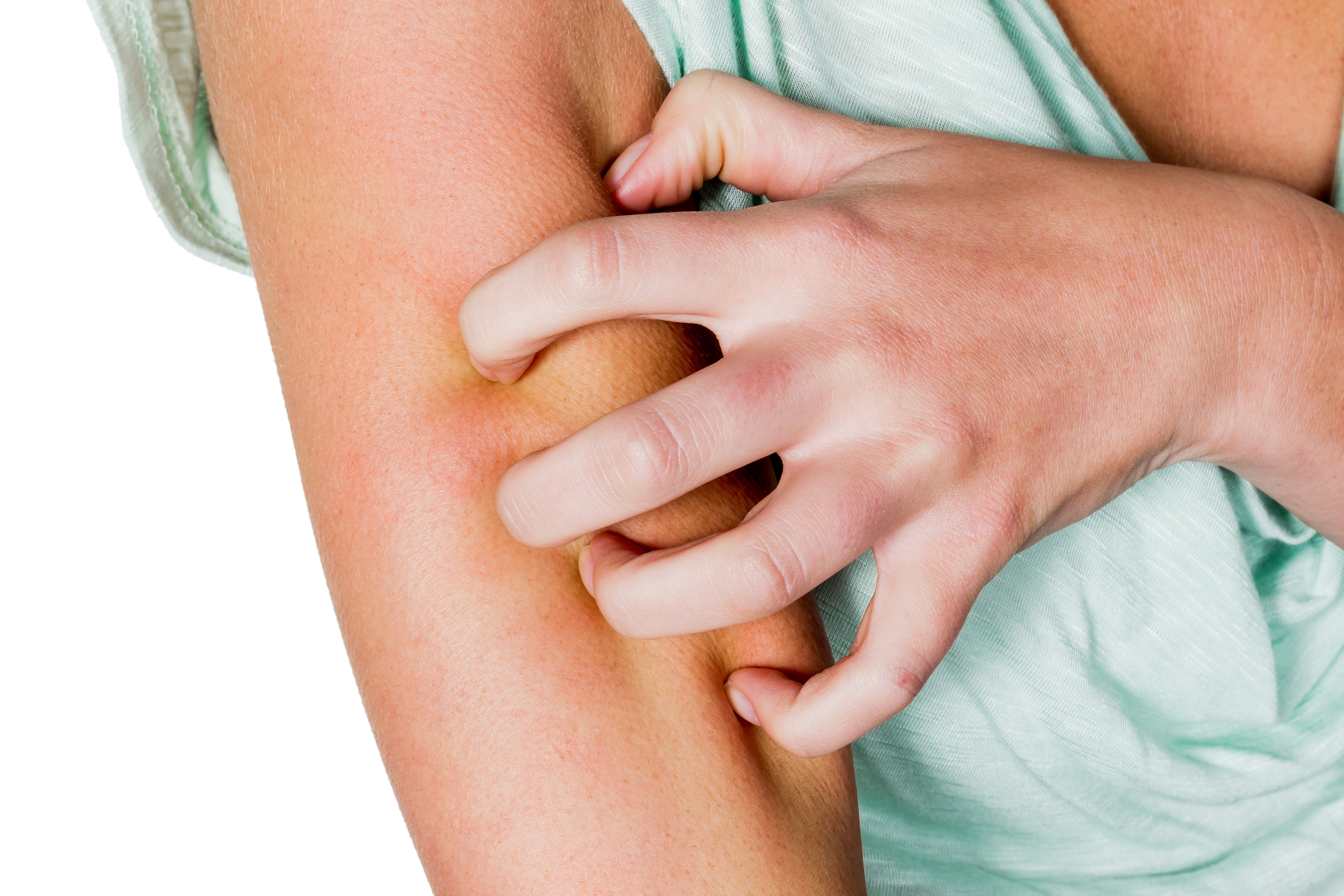
How do doctors investigate unusual cases of hives?
For atypical or persistent cases of hives, doctors may employ various diagnostic strategies:
- Comprehensive blood tests to check for underlying systemic conditions
- Skin biopsies to examine the affected tissue more closely
- Allergy tests to identify potential triggers
- Imaging studies if an internal cause is suspected
These investigations help ensure that no underlying serious conditions are missed and that appropriate treatment is provided.
Future Directions in Hives Research and Treatment
As our understanding of hives continues to evolve, researchers are exploring new avenues for diagnosis and treatment:
What new treatments are being developed for hives?
Emerging treatments for hives include:
- Novel biologic therapies targeting specific immune pathways
- Personalized medicine approaches based on genetic profiling
- Advanced antihistamines with improved efficacy and fewer side effects
- Innovative topical treatments for localized hives
How might future research improve our understanding of hives?
Ongoing and future research aims to:

- Identify genetic factors that predispose individuals to chronic hives
- Develop more accurate diagnostic tools to pinpoint hive triggers
- Uncover the complex immune mechanisms underlying different types of hives
- Explore the potential role of the microbiome in hive development and management
What role might technology play in hives management?
Technological advancements could revolutionize hives management through:
- Smartphone apps for tracking symptoms and identifying patterns
- Wearable devices that monitor environmental factors and physiological responses
- Artificial intelligence-powered systems for predicting and preventing hive outbreaks
- Telemedicine platforms for improved access to dermatological care
As research progresses, these innovations may offer new hope for individuals struggling with chronic or recurrent hives, potentially leading to more effective prevention strategies and targeted treatments.
Hives (Urticaria) in Adults: Condition, Treatments, and Pictures – Overview
52471
34
Information for
AdultsChildInfantTeen
caption goes here…
Images of Urticaria (Hives)
Overview
Hives (urticaria), also known as welts, is a common skin condition with an itchy rash of pink to red bumps that appear and disappear anywhere on the body. An individual lesion of hives typically lasts a few hours (up to 24 hours) before fading away, and new hives can appear as older areas disappear.
Physicians arbitrarily divide hives into acute (new or periodic episodes lasting fewer than 6 weeks) and chronic (periodic episodes lasting more than 6 weeks). Though many people have a single episode of acute hives that goes away within a few days to weeks, some individuals may have chronic hives that persist intermittently for years. More often than not, the offending agent is never identified in those who suffer from chronic hives.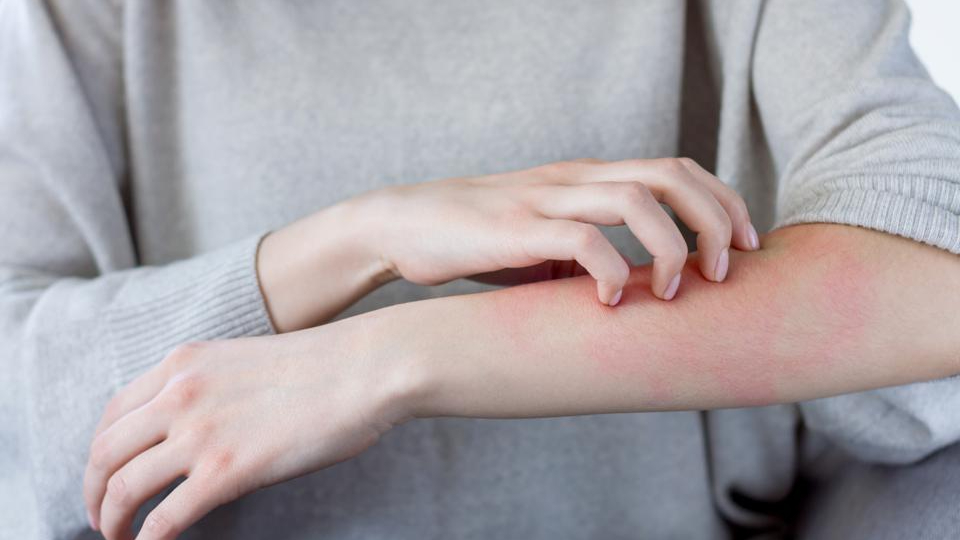
Hives can be triggered by many things, including:
- Medications, especially aspirin, ibuprofen, naproxen, narcotic painkillers, and antibiotics Infections with viruses, bacteria, or fungi
- Environmental allergies such as insect bites, pollen, mold, and animal dander
- Physical exposures such as heat, cold, water, sunlight, and pressure
- Medical conditions including some blood diseases and cancer
- Food allergies such as from strawberries, eggs, nuts, and shellfish
- Stress
In many cases, the causative agent is not identified despite extensive testing. This is referred to as idiopathic urticaria. In approximately 50% of idiopathic urticaria outbreaks, hives are most likely caused by a reaction from the person’s own immune system (autoimmune reaction).
Who’s at risk?
Hives appear in people of all ages, of all races, and of both sexes.
Acute hives are most common in children and young adults, and chronic hives are more often seen in females, especially middle-aged women.
Hives are very common; it is estimated that up to 20% of the population may develop them at some point in their lives.
Signs and Symptoms
The most common locations for hives include:
- Trunk
- Upper arms or upper legs
- Hands and feet
- Face
An individual lesion of hives appears as a well-defined pink-to-red swelling, ranging in size from 2 mm to over 30 cm. Some lesions may develop a lighter center. Hives usually appear in groups or batches. They are classically incredibly itchy. Individual lesions of hives disappear within 24 hours, though a single episode with the development of new lesions may last much longer.
Dermographism is a type of urticarial reaction that appears within a few minutes of scratching the skin. The rash is usually seen in a straight line (linear) pattern. This is usually a sign of a person with sensitive skin.
Swelling of the eyes, mouth, hands, feet, or genitals can sometimes occur with hives. This swelling, called angioedema, usually goes away within 24 hours, but it can be quite severe and life-threatening when swelling of the airway occurs.
This swelling, called angioedema, usually goes away within 24 hours, but it can be quite severe and life-threatening when swelling of the airway occurs.
Usually itchy, hives can also burn or sting.
Self-Care Guidelines
If you are experiencing mild hives, you might:
- Take cool showers.
- Apply cool compresses.
- Wear loose-fitting clothes.
- Avoid strenuous activity.
- Use an over-the-counter antihistamine such as diphenhydramine or loratadine.
In addition, try to discover what is triggering your hives and avoid whatever it might be. In particular, pay attention to any new foods that were ingested or new medications that were started.
When to Seek Medical Care
Call 911 if you are feeling lightheaded or are having difficulty breathing or swallowing associated with your hives.
In non-urgent situations with hives, see your doctor if the hives do not improve with treatment or if they continue to appear for more than a few days.
Before visiting your doctor, try to notice what might be triggering your hives and whether it improves or worsens with exposure to heat, cold, pressure, or vibration. Take a list of every medication (prescription or over-the-counter), supplement, or herbal remedy you may have taken recently. Also, recall any recent illnesses you may have had since some illnesses (or their treatments) can trigger hives.
Treatments Your Physician May Prescribe
After confirming that you have hives, the physician will work with you to discover the possible cause. Your doctor will take a detailed medical history and may do blood work, urine tests, or X-rays.
Obviously, the best treatment for hives is to discover any triggers and stop your exposure to them. However, most people with hives do not know the cause, and they require medications to get rid of them.
The most common medications for hives include:
- Sleep-causing (sedating) type-1 antihistamines such as diphenhydramine or hydroxyzine
- Non-sleep-causing (non-sedating) type-1 antihistamines such as loratadine, fexofenadine, desloratadine, or cetirizine
- Type-2 antihistamines such as ranitidine, cimetidine, or famotidine
- Doxepin
- Montelukast, zafirlukast, or zileuton
In rare situations, your doctor might prescribe oral corticosteroid pills.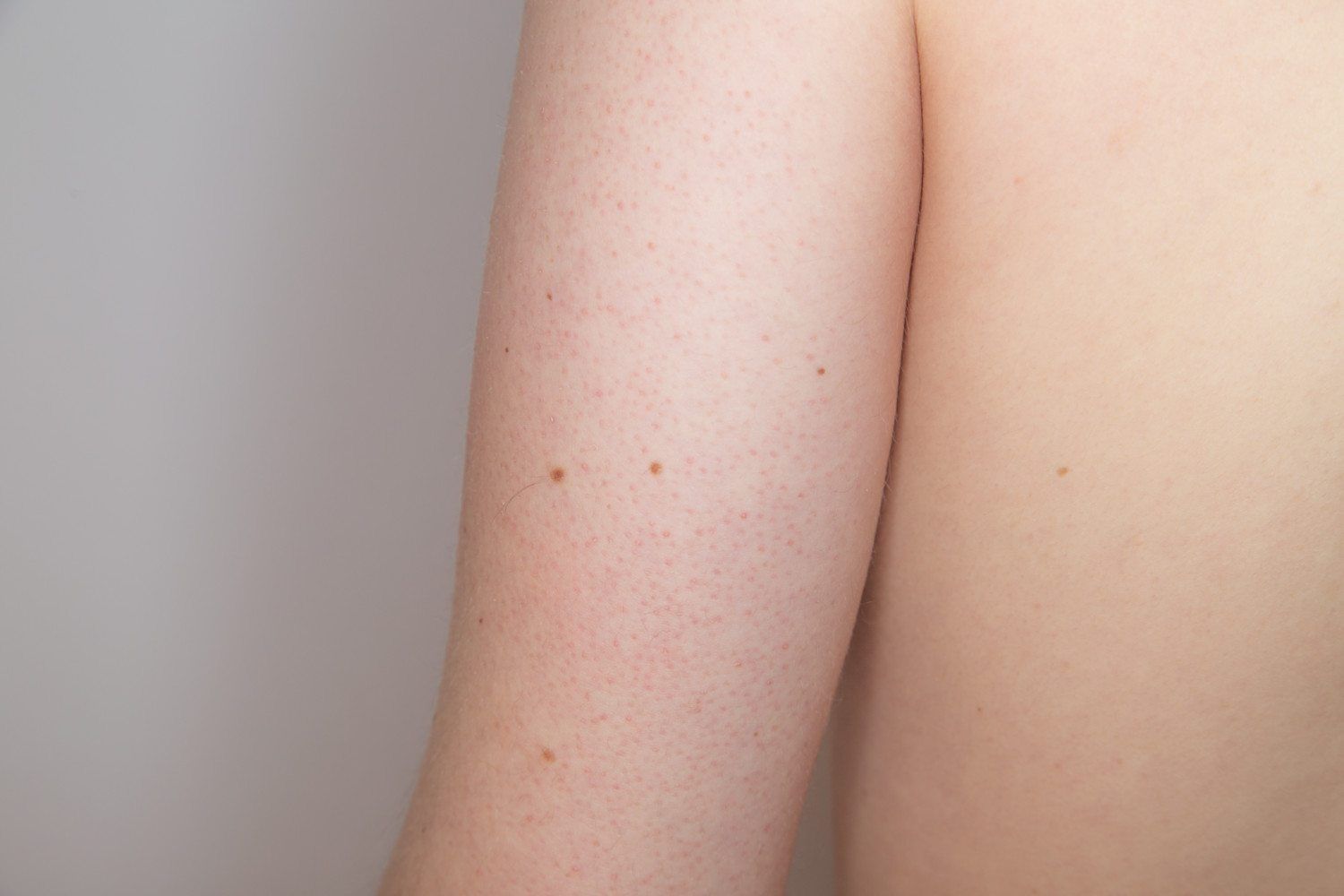
Trusted Links
MedlinePlus: HivesClinical Information and Differential Diagnosis of Urticaria (Hives)
References
a, Jean L., ed. Dermatology, pp.287-302. New York: Mosby, 2003.
Freedberg, Irwin M., ed. Fitzpatrick’s Dermatology in General Medicine. 6th ed. pp.547, 1129, 1137. New York: McGraw-Hill, 2003.
Hives (Urticaria) in Adults: Condition, Treatments, and Pictures – Overview
52471
34
Information for
AdultsChildInfantTeen
caption goes here…
Images of Urticaria (Hives)
Overview
Hives (urticaria), also known as welts, is a common skin condition with an itchy rash of pink to red bumps that appear and disappear anywhere on the body. An individual lesion of hives typically lasts a few hours (up to 24 hours) before fading away, and new hives can appear as older areas disappear.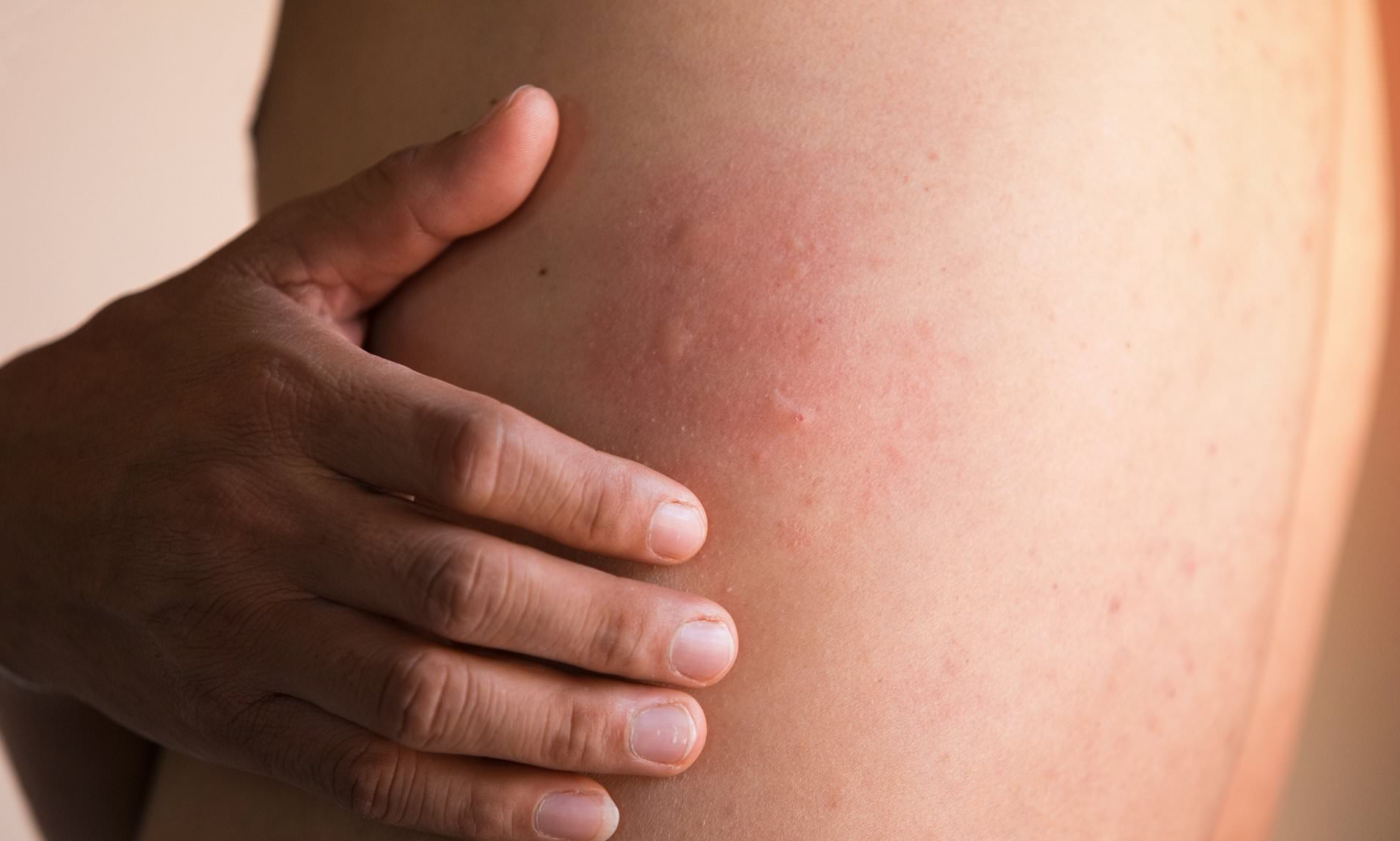
Physicians arbitrarily divide hives into acute (new or periodic episodes lasting fewer than 6 weeks) and chronic (periodic episodes lasting more than 6 weeks). Though many people have a single episode of acute hives that goes away within a few days to weeks, some individuals may have chronic hives that persist intermittently for years. More often than not, the offending agent is never identified in those who suffer from chronic hives.
Hives can be triggered by many things, including:
- Medications, especially aspirin, ibuprofen, naproxen, narcotic painkillers, and antibiotics Infections with viruses, bacteria, or fungi
- Environmental allergies such as insect bites, pollen, mold, and animal dander
- Physical exposures such as heat, cold, water, sunlight, and pressure
- Medical conditions including some blood diseases and cancer
- Food allergies such as from strawberries, eggs, nuts, and shellfish
- Stress
In many cases, the causative agent is not identified despite extensive testing. This is referred to as idiopathic urticaria. In approximately 50% of idiopathic urticaria outbreaks, hives are most likely caused by a reaction from the person’s own immune system (autoimmune reaction).
This is referred to as idiopathic urticaria. In approximately 50% of idiopathic urticaria outbreaks, hives are most likely caused by a reaction from the person’s own immune system (autoimmune reaction).
Who’s at risk?
Hives appear in people of all ages, of all races, and of both sexes.
Acute hives are most common in children and young adults, and chronic hives are more often seen in females, especially middle-aged women.
Hives are very common; it is estimated that up to 20% of the population may develop them at some point in their lives.
Signs and Symptoms
The most common locations for hives include:
- Trunk
- Upper arms or upper legs
- Hands and feet
- Face
An individual lesion of hives appears as a well-defined pink-to-red swelling, ranging in size from 2 mm to over 30 cm. Some lesions may develop a lighter center. Hives usually appear in groups or batches. They are classically incredibly itchy.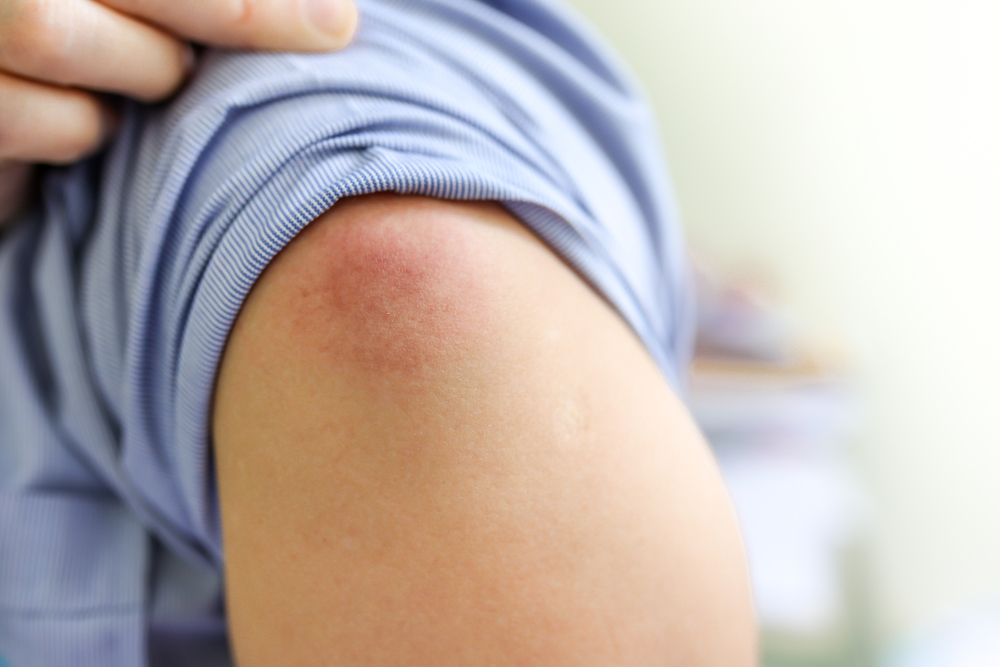 Individual lesions of hives disappear within 24 hours, though a single episode with the development of new lesions may last much longer.
Individual lesions of hives disappear within 24 hours, though a single episode with the development of new lesions may last much longer.
Dermographism is a type of urticarial reaction that appears within a few minutes of scratching the skin. The rash is usually seen in a straight line (linear) pattern. This is usually a sign of a person with sensitive skin.
Swelling of the eyes, mouth, hands, feet, or genitals can sometimes occur with hives. This swelling, called angioedema, usually goes away within 24 hours, but it can be quite severe and life-threatening when swelling of the airway occurs.
Usually itchy, hives can also burn or sting.
Self-Care Guidelines
If you are experiencing mild hives, you might:
- Take cool showers.
- Apply cool compresses.
- Wear loose-fitting clothes.
- Avoid strenuous activity.
- Use an over-the-counter antihistamine such as diphenhydramine or loratadine.
In addition, try to discover what is triggering your hives and avoid whatever it might be. In particular, pay attention to any new foods that were ingested or new medications that were started.
In particular, pay attention to any new foods that were ingested or new medications that were started.
When to Seek Medical Care
Call 911 if you are feeling lightheaded or are having difficulty breathing or swallowing associated with your hives.
In non-urgent situations with hives, see your doctor if the hives do not improve with treatment or if they continue to appear for more than a few days.
Before visiting your doctor, try to notice what might be triggering your hives and whether it improves or worsens with exposure to heat, cold, pressure, or vibration. Take a list of every medication (prescription or over-the-counter), supplement, or herbal remedy you may have taken recently. Also, recall any recent illnesses you may have had since some illnesses (or their treatments) can trigger hives.
Treatments Your Physician May Prescribe
After confirming that you have hives, the physician will work with you to discover the possible cause.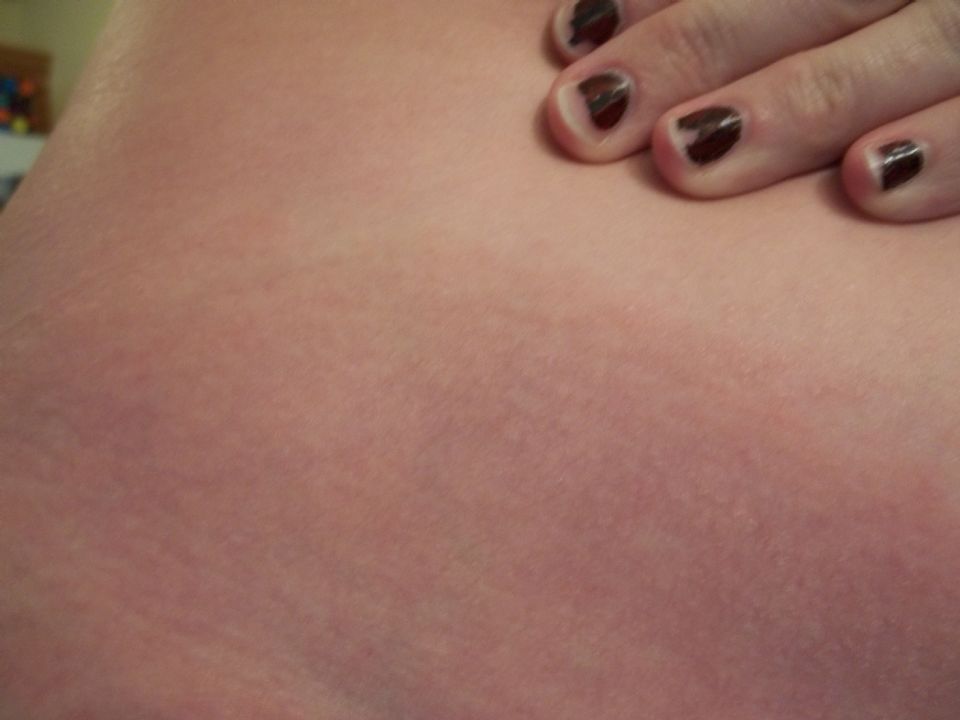 Your doctor will take a detailed medical history and may do blood work, urine tests, or X-rays.
Your doctor will take a detailed medical history and may do blood work, urine tests, or X-rays.
Obviously, the best treatment for hives is to discover any triggers and stop your exposure to them. However, most people with hives do not know the cause, and they require medications to get rid of them.
The most common medications for hives include:
- Sleep-causing (sedating) type-1 antihistamines such as diphenhydramine or hydroxyzine
- Non-sleep-causing (non-sedating) type-1 antihistamines such as loratadine, fexofenadine, desloratadine, or cetirizine
- Type-2 antihistamines such as ranitidine, cimetidine, or famotidine
- Doxepin
- Montelukast, zafirlukast, or zileuton
In rare situations, your doctor might prescribe oral corticosteroid pills.
Trusted Links
MedlinePlus: HivesClinical Information and Differential Diagnosis of Urticaria (Hives)
References
a, Jean L., ed. Dermatology, pp.287-302. New York: Mosby, 2003.
Dermatology, pp.287-302. New York: Mosby, 2003.
Freedberg, Irwin M., ed. Fitzpatrick’s Dermatology in General Medicine. 6th ed. pp.547, 1129, 1137. New York: McGraw-Hill, 2003.
Hives (Urticaria) (for Teens) – Nemours KidsHealth
What Are Hives?
Hives are red raised bumps or welts on the skin. Hives (or urticaria) is a common skin reaction to something like an
allergen(a substance that causes allergies).
The spots can appear anywhere on the body and can look like tiny little spots, blotches, or large connected bumps.
Individual hives can last anywhere from a few hours to a week (sometimes longer), and new ones might replace those that fade. Hives that stay for 6 weeks or less are called
acutehives; those that go on longer than 6 weeks are
chronichives.
What Causes Hives?
An allergic reaction can cause hives, as can:
- temperature extremes
- stress
- infections
- some illnesses
In some cases, a person has hives and angioedema, a condition that causes swelling around the eyes, lips, hands, feet, or throat.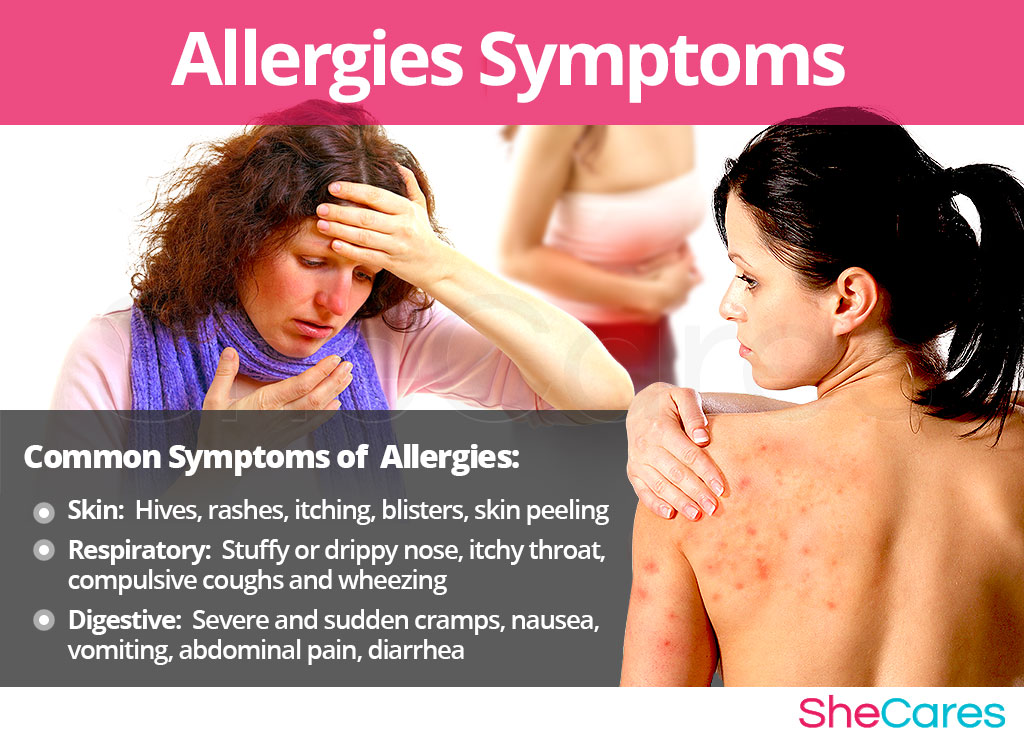 Very rarely, hives and angioedema are associated with an allergic reaction that involves the whole body or anaphylactic shock.
Very rarely, hives and angioedema are associated with an allergic reaction that involves the whole body or anaphylactic shock.
The red welts of hives happen when mast cells in the bloodstream release the chemical histamine, which makes tiny blood vessels under the skin leak. The fluid pools within the skin to form spots and large welts. This can happen for a number of reasons. But in many cases the cause is never found.
Most often, hives are associated with an allergic reaction, which can make the skin break out within minutes. Common allergies include:
Sometimes a breakout of hives has nothing to do with allergies. Other causes include:
- infections, including viruses
- exercise
- anxiety or stress
- sun exposure
- exposure to cold, such as cold water or snow
- contact with chemicals
- scratching (dermatographia)
- putting pressure on the skin, such as from sitting too long or carrying a heavy backpack over a shoulder
Hives due to physical causes (such as pressure, cold, or sun exposure) are called physical hives.
It can be hard to figure out what causes chronic hives, though it’s sometimes linked to an immune system illness, like lupus. Other times, medicines, food, insects, or an infection can trigger an outbreak. Often, though, doctors don’t know what causes chronic hives.
What Are the Signs & Symptoms of Hives?
The hallmark red raised welts are the main sign of hives. The welts can:
- have a pale center
- appear in clusters
- change shape and location in a matter of hours
- be tiny or as big as a dinner plate
- itch, sting, or cause a burning sensation
Someone who also has angioedema might have puffiness, blotchy redness, swelling, or large bumps around the eyes, lips, hands, feet, genitals, or throat. Other symptoms can include nausea, vomiting, or belly pain.
Rarely, a person with hives and angioedema can also get anaphylactic shock. Signs of anaphylactic shock include breathing trouble, a drop in blood pressure, dizziness, or a loss of consciousness (passing out).
How Are Hives Diagnosed?
Most of the time, a doctor can diagnose hives just by looking at the skin. To find the cause, you may be asked questions about your
medical history, recent illnesses, medicines, exposure to allergens, and daily stressors.
If you have chronic hives, the doctor may ask you to keep a daily record of activities, such as what you eat and drink, and where the hives tend to show up on your body. Diagnostic tests — such as blood tests, allergy tests, and tests to rule out conditions that can cause hives, such as thyroid disease or hepatitis — might be done to find the exact cause of the hives.
To check for physical hives, a doctor may put ice on your skin to see how it reacts to cold or place a sandbag or other heavy object on your thighs to see if the pressure will cause hives.
How Are Hives Treated?
In many cases, mild hives won’t need treatment and will go away on their own. If a definite trigger is found, avoiding it is part of the treatment. If the hives feel itchy, the doctor may recommend an antihistamine medicine to block the release of histamine in the bloodstream and prevent breakouts.
If the hives feel itchy, the doctor may recommend an antihistamine medicine to block the release of histamine in the bloodstream and prevent breakouts.
For chronic hives, the doctor may suggest that you take a non-sedating (non-drowsy) prescription or over-the-counter antihistamine every day. Not everyone responds to the same medicines, though, so it’s important to work with the doctor to find the right one for you.
If a non-drowsy antihistamine doesn’t work, the doctor may suggest a stronger antihistamine, another medicine, or a combination of medicines. In rare cases, a doctor may prescribe a steroid pill or liquid to treat chronic hives. Usually this is done for just a short period (5 days to 2 weeks) to prevent harmful steroid side effects.
In Case of Emergency
Anaphylactic shock and bad attacks of hives or angioedema are rare. But when they happen, they need immediate medical care.
People with bad allergies should carry an injectable shot of
epinephrine. The doctor will teach you how to safely give yourself an injection if you are at risk for a severe allergic reaction.
The doctor will teach you how to safely give yourself an injection if you are at risk for a severe allergic reaction.
What parents need to know about hives in kids| OSF HealthCare
It’s not uncommon for children to break out in hives, which are characterized by a raised, flat pink rash called wheals or urticarial.
Michael Endris, MD, a pediatrician with OSF Medical Group – Pediatrics in Bloomington, recently sat down with us to discuss hives in children
Q. What are hives?’
A. Hives are usually circular or oval raised red bumps, often with a pale center. They range from small (less than 1 cm) to quite large. They are intensely itchy, are often worse at night and somewhat transient. They may crop up over an hour or two and then disappear within 24 hours. Hives can appear alone, in a group, or over a large part of the body. Anyone can get hives. But children with allergies are at a greater risk.
Q. What causes hives in a child?
A. The most commonly identified trigger for hives in children is viral infections. Other triggers may include allergic reactions to food, medications, or insect stings and bites.
The most commonly identified trigger for hives in children is viral infections. Other triggers may include allergic reactions to food, medications, or insect stings and bites.
Q. What children are at risk for hives?
A. Patients with a history of allergies or anaphylaxis (severe and sometimes life-threatening reaction to an allergen) are at risk for getting hives. There is a risk of hives any time a new medication is started (even over-the-counter medications), an insect bite or sting is reported, or new foods are introduced.
Q. What are the symptoms of hives?
A. Hives may present as a severely itchy rash. However, a number of other conditions could be mistaken for hives.
Q. How long do viral hives last in children?
A. Hives caused by a viral infection are typically acute, and usually last from four to 24 hours. Due to the transient nature, it can be helpful to photograph the rash to show your doctor.
Q. When should someone be concerned about their child’s hives?
A. If hives are present in addition to other symptoms such as tongue or mouth swelling, breathing trouble, vomiting or abdominal pain, fainting or other complaints, it is important to see a doctor right away.
If hives are present in addition to other symptoms such as tongue or mouth swelling, breathing trouble, vomiting or abdominal pain, fainting or other complaints, it is important to see a doctor right away.
Q. How are hives treated in a child?
A. Hives are treated with antihistamine medications such as cetirizine or loratadine. The best treatment is for your child to stay away from known triggers. If the hives were caused by a medicine, your child should strictly stay away from that medicine.
Q. When should a parent seek immediate medical care?
A. Children can have life-threatening allergic reactions. If a child has trouble breathing or wheezing, suddenly develops a hoarse voice or cough, has trouble swallowing or begins drooling or slurring their speech suddenly, you should seek immediate medical attention.
How long does it take for hives to go away?
If you’ve noticed a red, raised, itchy rash on your skin, you may have hives.
Hives are round or ring-shaped patches (weals) that form on your skin and they can appear anywhere on your body.
The condition can be triggered by an allergic reaction to food, infections, chronic health conditions, certain medications, stress or drinking alcohol — and a variety of physical stimuli, including temperature changes or physical pressure.
But hives can also be triggered by factors usually associated with summer, or hot weather, such as insect bites, pollen, sun exposure and heat. It’s common for the condition to flare up in summertime.
If you have hives, you might be wondering how long it will take for your rash to fade. Most cases resolve within a day or 2, but the exact length of time will depend on the type of hives you have.
What are the different types of hives — and how long do they last?
Acute hives
Acute hives (sometimes called acute urticaria or acute spontaneous urticaria) are hives that appear suddenly, and then fade away on their own.
They normally fade within 24-48 hours, although some cases of acute hives can last for several weeks.
You may notice that individual weals seem to fade after an hour or less, but new ones may appear in other places – giving you the impression that the rash is moving around your body.
Some people also experience swelling in the deeper layers of the skin (angioedema), which can affect any part of the body, but it often occurs on your hands, lips, feet, eyes or genitals.
Studies show that 1 in 6 people experience an episode of acute hives at some point in their lives. It’s often difficult to identify the cause of an outbreak, but the condition is normally harmless and you may be able to manage some of your symptoms at home.
Chronic hives
Chronic or persistent hives are hives that last for more than 6 weeks, but they normally last between 6 and 12 months, sometimes longer, according to the British Association of Dermatologists.
If you have chronic hives, you may find that your symptoms either come and go intermittently, or you have an itchy, red rash on most days.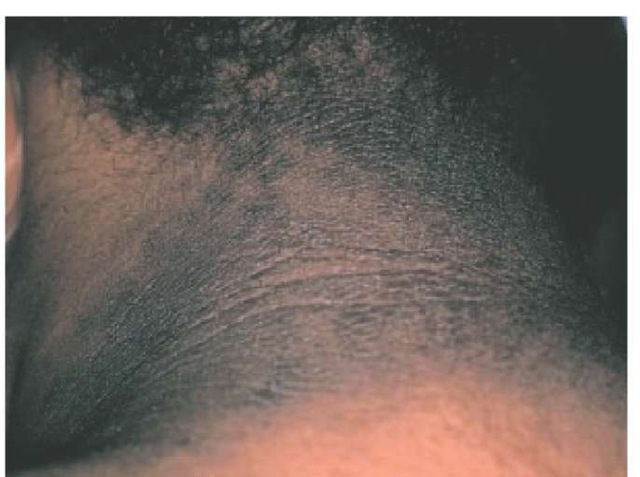
Chronic hives can be the result of an autoimmune condition like rheumatoid arthritis or lupus. Research also shows that chronic hives can be linked to illnesses like viral hepatitis and an underactive thyroid (hypothyroidism), but for some cases of chronic hives there isn’t an obvious cause or trigger.
If you think that you might have chronic hives, you should see a doctor to help identify any possible triggers and causes. A doctor may also be able to prescribe medications to help you control your symptoms.
Physical urticarias
Physical urticaria is the medical name for any type of hives that are triggered by a distinct, physical stimulus. For example, some people break out in hives when they sweat, or rub their skin.
Other people find that cold temperatures, sunlight or friction trigger an outbreak, and in some rare cases, water can also be a trigger for hives.
If you have physical urticaria, your hives will normally develop within minutes, and then fade within 1 hour. If you think that you may have this form of hives, try to identify your triggers and avoid them as much as you can.
If you think that you may have this form of hives, try to identify your triggers and avoid them as much as you can.
You may also find that it helps to take an antihistamine when you break out in a rash, but you should see a doctor if you intend to take antihistamine medications for more than a couple of days in a row.
When to see a doctor about hives
You should see a doctor if your symptoms do not improve after 2 days, your rash seems to be getting worse or your hives keep going away and then coming back, as this could be a sign that you are allergic to something.
You should also see a doctor if you have a high temperature or notice any swelling under your skin (angioedema).
You should seek medical attention immediately if you have any of the following symptoms:
- difficulty breathing
- difficulty swallowing
- dizziness or fainting
- nausea or vomiting
- an increased heart rate
- rapid and severe swelling of the face, mouth or throat
Hives, hives and more hives!
Many children develop hives, which are swollen, red welts that, by definition, are quite itchy.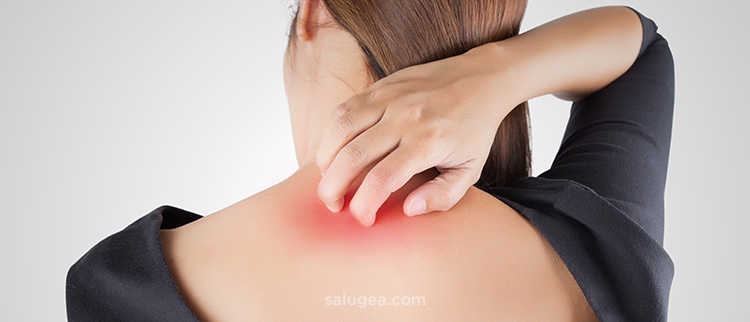 Oftentimes the itching starts before the welts appear.
Oftentimes the itching starts before the welts appear.
Hives are a very common problem and it is estimated to affect at least 20 percent of people some time during their life. The medical term for hives is urticaria.
There are two types of urticaria:
- Acute urticaria are hives that last six weeks or less
- Chronic urticaria happens when hives last or recur for more than six weeks
Acute urticaria in a child can be caused by infections, foods, medications, insect bites or blood transfusions. When a child develops acute hives, the first thing that usually comes to mind is, “What did she or he eat that caused this rash?” However, most cases of childhood hives are a result of infections. Some infections that can cause hives in children include respiratory viruses (common cold), strep throat, urinary tract infections, hepatitis, infectious mononucleosis (mono) and many other viral infections.
In an infant or a toddler who is being introduced to new foods, think about food allergy as a possible cause of the hives, especially peanuts, tree nuts, eggs, cow’s milk, and fish or shellfish.-Step-16.jpg) If your child develops hives while or shortly after playing outdoors, look at their skin for any signs of insect bites, especially fire ants in our area. When a child develops hives while taking a medication, the hives could have been caused by the medication, but this gets tricky if the child is taking an antibiotic, since the hives could also have been caused by the initial infection for which she was taking that antibiotic.
If your child develops hives while or shortly after playing outdoors, look at their skin for any signs of insect bites, especially fire ants in our area. When a child develops hives while taking a medication, the hives could have been caused by the medication, but this gets tricky if the child is taking an antibiotic, since the hives could also have been caused by the initial infection for which she was taking that antibiotic.
A single episode of hives in an otherwise healthy child does not usually need extensive testing, as most of the time it is caused by a viral infection. However, if hives reoccur, you should see your pediatrician or an allergy specialist to evaluate possible causes. Once the cause of hives is identified, the best treatment is to avoid or eliminate that cause (in the case of foods, medications with the help of a physician, insects). For hives caused by infections, they may take up to three weeks to resolve, but antihistamines will usually help improve the hives until completely resolved.
Chronic hives are often a challenge for the child, parents and physician. In many cases, we cannot identify the cause of chronic hives, and this is called idiopathic urticaria, or chronic autoimmune urticaria, when the immune system is suspected to be the root cause of the hives. Chronic hives can also be caused by thyroid disease, other endocrine problems or, very rarely in children, cancer. There is a type of chronic hives called physical urticaria, in which hives are caused by rubbing or scratching the skin (dermatographism), constant pressure (pressure urticaria), by changes in temperature (heat or cold urticaria), or sun exposure (solar urticaria). Chronic hives should be evaluated by an allergist who will take a very detailed history and may perform some testing (blood, urine or skin tests). Chronic hives are frequently treated by a combination of two or three antihistamines, and in more severe cases, short courses of steroid medications or long-term immune modulators. If hives involve swelling of tongue or lips, or are accompanied by trouble breathing, your child may be prescribed an epinephrine autoinjector to use in case of emergency.
The good news is that in most cases of chronic hives, they gradually disappear over time. For some children, they disappear in a few months, but in others they may continue to recur for several years. In these cases, it is more effective to take the medications daily than to wait for breakouts.
Treating Hives | Hives Information
For many, allergic reactions cause symptoms like a runny nose or watery eyes. Others experience hives, a common skin reaction involving red, itchy, rash-like marks. Hives usually go away on their own within a few days to a week. But for some, hives become a chronic, or long-term, issue.
If you develop hives and they last longer than six weeks, you may have a condition known as chronic hives. Also called chronic urticaria, this condition causes unpleasant symptoms that may interfere with your daily activities. Fortunately, there are many treatment options available, and if one doesn’t work, your doctor can help you find effective relief using other methods.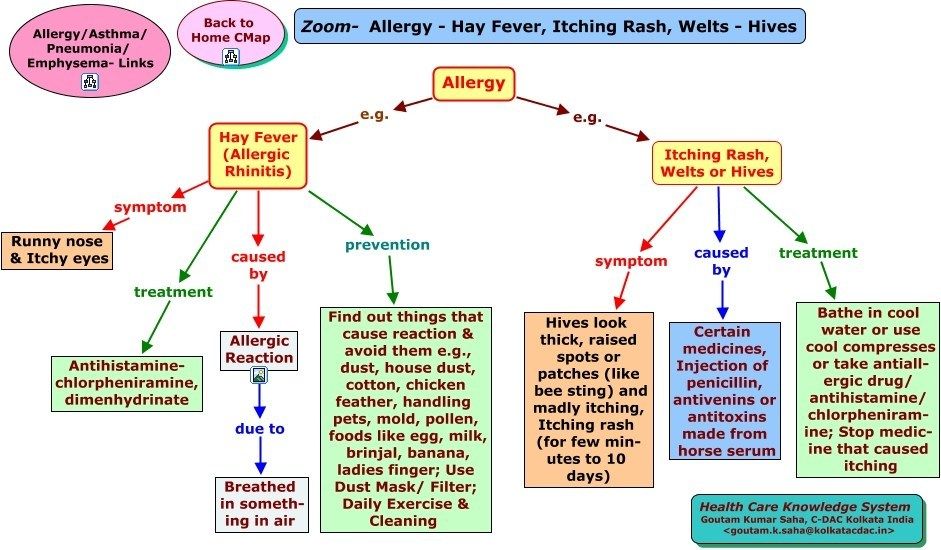
Chronic hives are hives that don’t go away after six weeks or longer and frequently reoccur. Like acute, or short-term, hives, chronic hives cause itchy red welts on the surface of the skin. Some hives may even connect, forming larger, more uncomfortable welts.
Most people experience multiple symptoms when living with chronic hives. Your symptoms may include:
- Red welts appearing anywhere on your body
- Welts that vary in shape, color, or size
- Mild to severe itching
- Angioedema, a condition characterized by painful swelling in the throat and on the eyelids and lips
- Welts that persist for more than six weeks or that frequently reform on the body
What causes chronic hives?
Chronic hives can have a variety of causes, although unfortunately, the exact biological action causing chronic hives is unknown. However, doctors do know that hives seem to form in response to certain triggers. These triggers may be allergens in the environment, or they may be related to other factors like the consumption of alcohol or certain foods. Hives may be triggered by:
These triggers may be allergens in the environment, or they may be related to other factors like the consumption of alcohol or certain foods. Hives may be triggered by:
- Bites from insects or parasites
- Certain medications, like nonsteroidal anti-inflammatory drugs (NSAIDs)
- Exercise
- Exposure to sunlight, heat, or cold
- Infections
- Putting pressure on the skin or scratching existing welts
- Stress
When we don’t know the specific cause or trigger of chronic hives, this is called chronic spontaneous urticaria. In all cases, the red welts that appear after exposure to a trigger form because certain cells release a chemical called histamine into the bloodstream. Histamine causes itching, redness, and swelling.
How are chronic hives diagnosed?
To diagnose your condition, your doctor will ask you several questions about your past medical history, current health, and any known allergies you may have. Additionally, your doctor may suggest keeping a food, activity, and medication diary for a week or two. This diary can help determine potential triggers, especially if you keep careful notes about what you eat and do, and whether those choices resulted in hives. Your doctor may also recommend blood or skin tests to see if any underlying causes may contribute to hives.
Additionally, your doctor may suggest keeping a food, activity, and medication diary for a week or two. This diary can help determine potential triggers, especially if you keep careful notes about what you eat and do, and whether those choices resulted in hives. Your doctor may also recommend blood or skin tests to see if any underlying causes may contribute to hives.
What are my treatment options?
Many people find relief from the symptoms of chronic hives by taking an antihistamine medication once every day. Your doctor may recommend a non-drowsy antihistamine to help block cells from releasing histamine into your bloodstream.
For some, antihistamines by themselves aren’t enough to control chronic hives. Fortunately, other medications may help relieve symptoms. In addition to an antihistamine, your doctor may suggest:
- Anti-inflammatory medications: If you suffer from angioedema or your hives are especially severe, anti-inflammatories, like certain steroids, may help control your symptoms.

- Histamine (H-2) blockers: These drugs block the production of histamine in your body.
- Immunosuppressants: Your doctor may prescribe immunosuppressants, which reduce the activity of your body’s immune system.
Your specific treatment will depend on the severity of your hives, your past medical history, and any other medical conditions you may have.
Should I worry about a severe allergic reaction?
Chronic hives are usually not associated with any serious allergic reactions. These emergencies, also called anaphylaxis, are dangerous, potentially life-threatening allergic reactions requiring medical treatment. Hives resulting from anaphylaxis often occur with other symptoms, such as difficulty breathing, dizziness, and swollen eyelids, lips, and tongue. If you experience any of these symptoms along with hives, call 911 immediately.
Chronic hives can be difficult to live with, but there are effective treatment options to help manage symptoms. Identifying and avoiding triggers is also key to managing chronic hives. And after making a positive diagnosis, your doctor will suggest one or several treatments that may be beneficial to you.
Identifying and avoiding triggers is also key to managing chronic hives. And after making a positive diagnosis, your doctor will suggest one or several treatments that may be beneficial to you.
90,000 Which doctor should I go to with a rash on my hands
Dermatologists of Moscow – latest reviews
I liked everything. Nadezhda Vladimirovna is a good and attentive doctor. She conducted an examination, consulted me, gave recommendations and appointments.
Moderation,
October 22, 2021
We liked everything.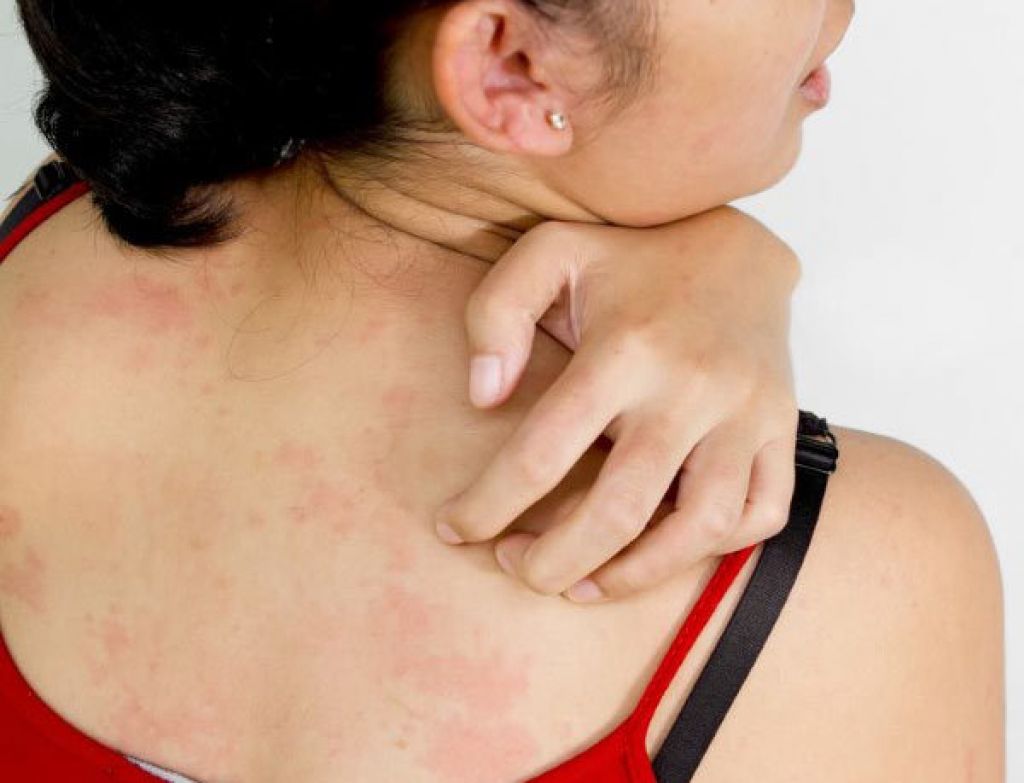 Inna Nikolaevna quickly, professionally looked at the child, prescribed treatment, and gave recommendations. She communicated well with the child. Wonderful doctor.
Inna Nikolaevna quickly, professionally looked at the child, prescribed treatment, and gave recommendations. She communicated well with the child. Wonderful doctor.
Moderation,
October 22, 2021
My daughter and I were satisfied with the quality of the reception and the attitude.The doctor is attentive, friendly and interested. She told everything in detail and in detail, prescribed a comprehensive treatment. We will be able to evaluate the most important result after complete treatment. This specialist was advised to us and I hope it was not in vain.
Yuliya,
October 20, 2021
Roza Petrovna is a polite and interested doctor. At the reception, the specialist conducted a survey, examination and gave the necessary recommendations. The doctor answered all my questions and explained everything in an accessible way. I analyzed the test results and prescribed treatment. I was pleased with the reception.
At the reception, the specialist conducted a survey, examination and gave the necessary recommendations. The doctor answered all my questions and explained everything in an accessible way. I analyzed the test results and prescribed treatment. I was pleased with the reception.
Moderation,
October 22, 2021
I liked the doctor’s work.Nadezhda Alexandrovna is friendly, attentive, knows her business. At the reception, she prescribed me treatment. If necessary, I could recommend a doctor to my friends.
Moderation,
October 22, 2021
At the reception, the doctor listened to me, took tests, gave his recommendations and prescribed treatment.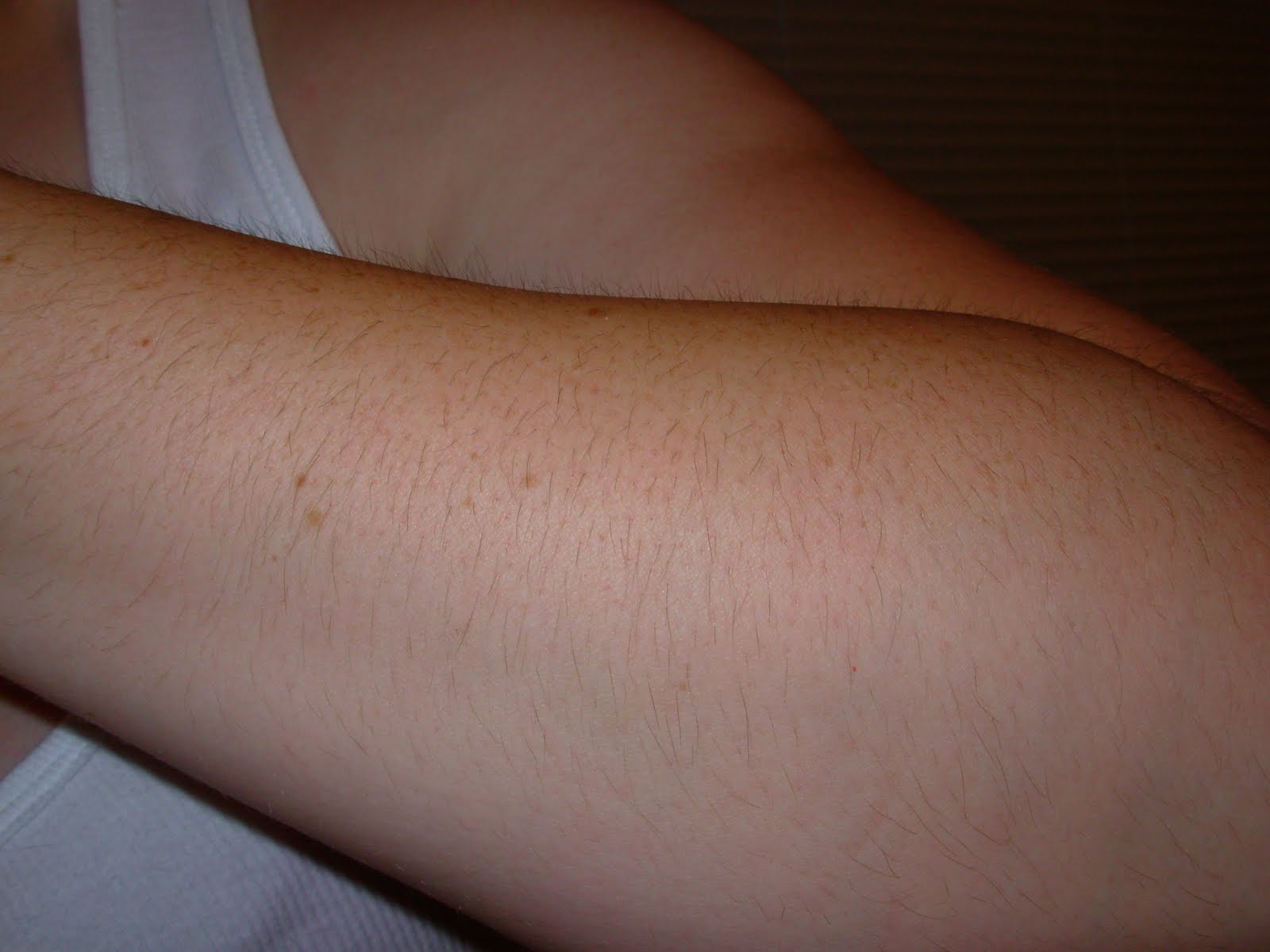 The doctor is attentive, polite, correct, explains everything clearly and easily. I can recommend this specialist to my friends, if necessary, and if necessary, I can apply again. I chose this doctor at a convenient location for me. I was pleased with the quality of the reception.
The doctor is attentive, polite, correct, explains everything clearly and easily. I can recommend this specialist to my friends, if necessary, and if necessary, I can apply again. I chose this doctor at a convenient location for me. I was pleased with the quality of the reception.
Michael,
October 20, 2021
Anna Viktorovna is a very good and polite doctor.She explained everything to me clearly, conducted an examination and consultation. As a result, the doctor gave recommendations and appointments. Little time has passed and it is too early to evaluate the effect. But I already have a follow-up appointment.
Moderation,
October 22, 2021
I really liked the doctor and the appointment.Evgeny Petrovich is a wonderful, attentive doctor, pleasant to talk to. At the reception, he diagnosed me and prescribed treatment. It can be seen that he understands his profession.
Moderation,
October 22, 2021
After listening to my problem, the doctor immediately said that I needed to see the surgeon, not to him.:max_bytes(150000):strip_icc()/urticaria-symptoms-5b55f74746e0fb0037d9ef2a.png) Gave a couple of household tips and persistently asked to pay for the appointment. Escorted to the front desk and waited for me to pay so I wouldn’t run away (ahah)
Gave a couple of household tips and persistently asked to pay for the appointment. Escorted to the front desk and waited for me to pay so I wouldn’t run away (ahah)
The doctor may be good, but he did not behave very nicely!
Moderation,
October 22, 2021
At the reception, Olga Grigorievna listened to me, conducted an examination, consulted, gave her recommendations and prescribed treatment.Recommendations are already helping. The doctor is attentive, kind, polite, competent, explains everything clearly and easily. I liked it all very much.
Moderation,
October 21, 2021
Show 10 reviews of 24 320 90 000 treatment, symptoms, how it manifests itself and what to do
https: // ria.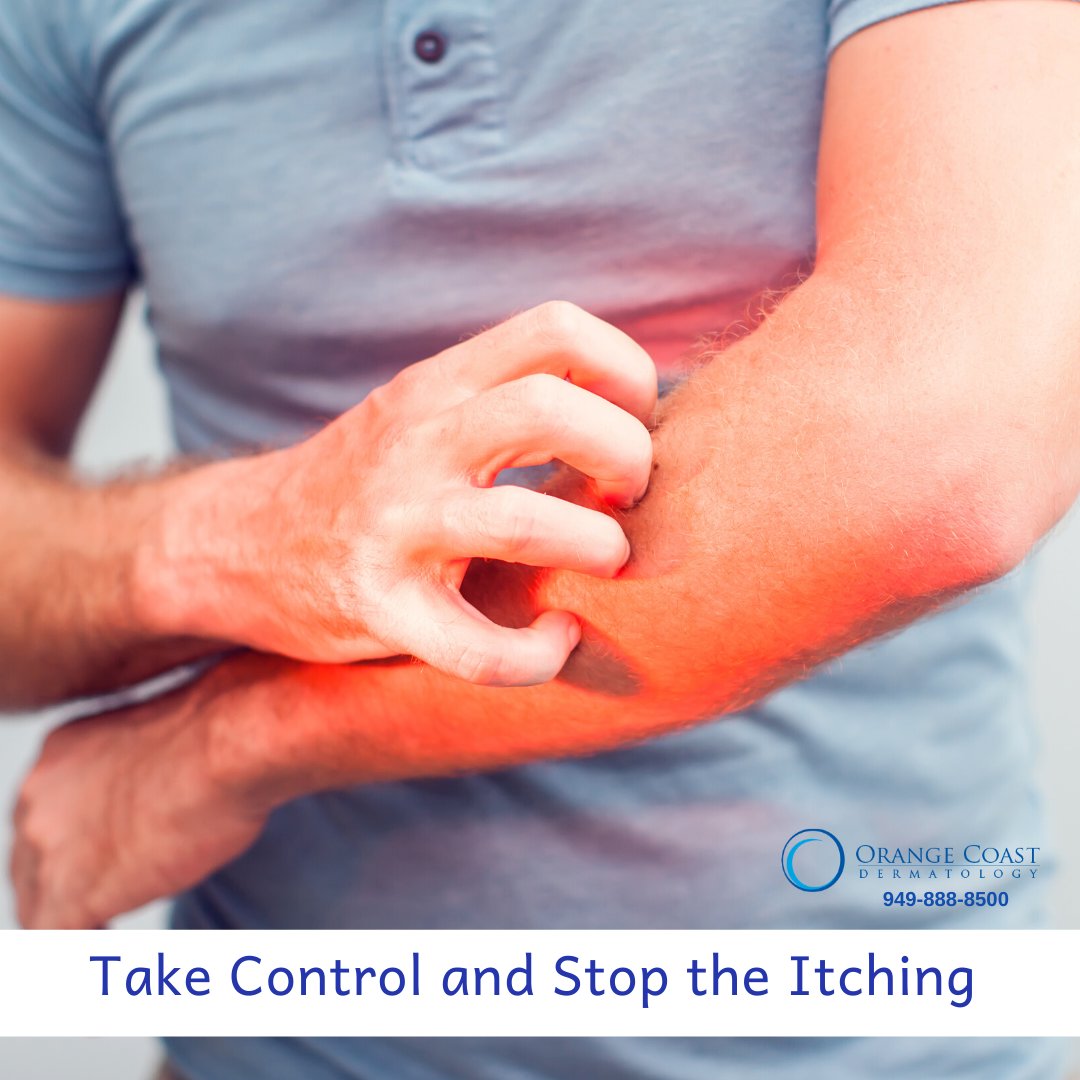 ru / 20210920 / allergiya-1751039155.html
ru / 20210920 / allergiya-1751039155.html
Winter is near: why there is an allergy to cold and how to treat it
Allergy to cold: treatment, symptoms, how it manifests itself and what to do
Winter is near: why there is an allergy to cold and how to treat it
A red rash on the hands and face in cold weather is a phenomenon that adults are increasingly complaining about with the approach of winter; from a medical point of view, it has not been studied … RIA Novosti, 20.09.2021
2021-09-20T19: 40
2021-09-20T19: 40
2021-09-20T21: 00
health – society
health
allergy
healthy lifestyle (healthy lifestyle)
/ html / head / meta [@ name = ‘og: title’] / @ content
/ html / head / meta [@ name = ‘og: description’] / @ content
https: // cdnn21.img.ria.ru/images/07e4/0b/13/1585344301_0-0:3072:1728_1920x0_80_0_0_98dd85d2a7c1223c47d6f0d6c20e656e.jpg
MOSCOW, September 20 – RIA Novosti.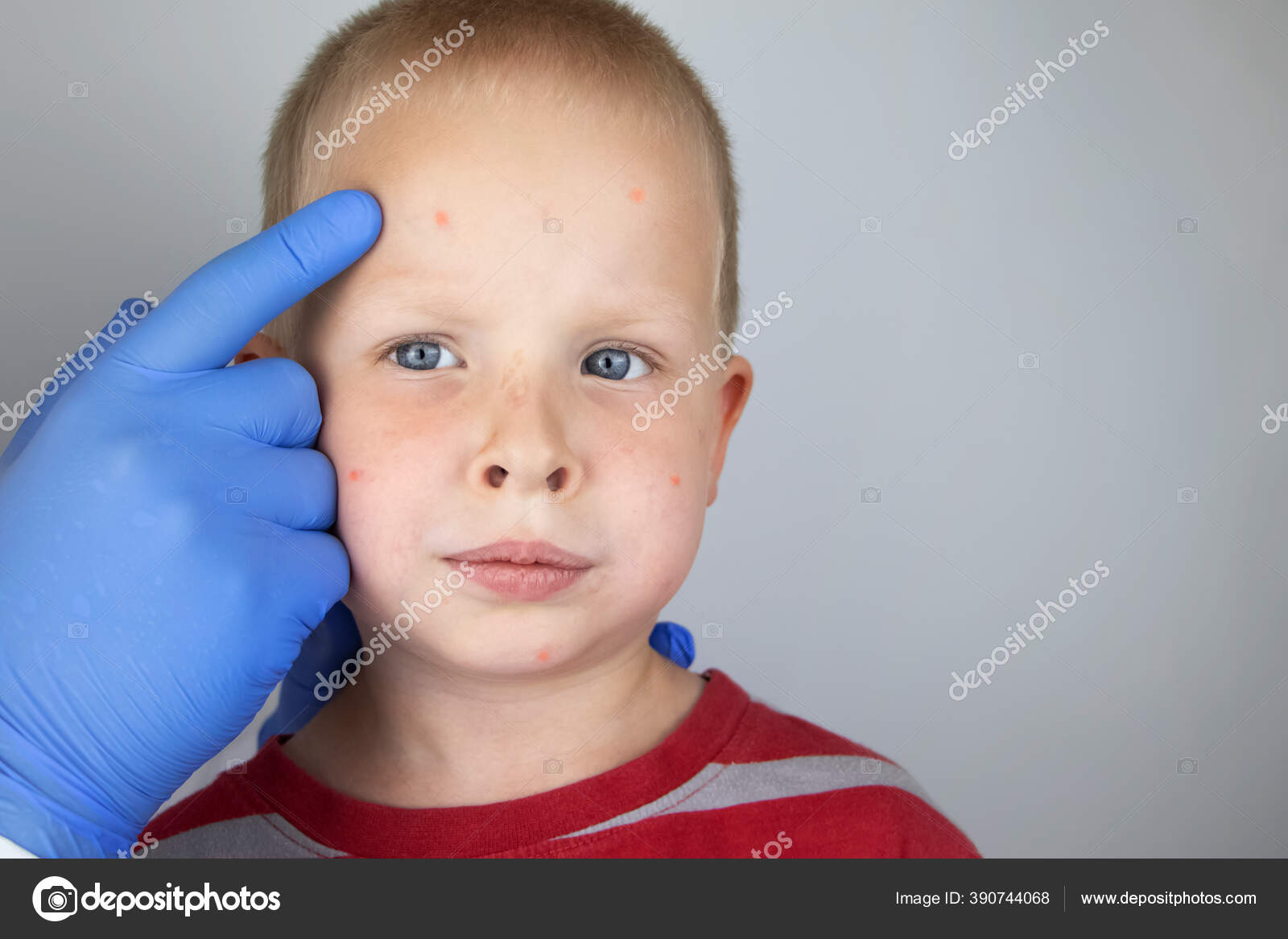 A red rash on the hands and face in cold weather is a phenomenon that adults increasingly complain about with the approach of winter, from a medical point of view, it is not fully understood. About what a “cold allergy” is, how it manifests itself, how to treat it and what doctors recommend for the prevention of cold allergies – in the material of RIA Novosti. at least once there was an allergic reaction to something, this means: during life it can be repeated both to this irritant and to something else.In the case of an allergy to cold, or cold urticaria, a person is dealing with the body’s reaction to low air temperature or a cold object with which there was contact. However, unlike other allergies, cold weather does not have a direct allergen, such as pollen. If earlier it was believed that only chemical substances can cause allergies, today it has been proven that physical factors, such as cold, can also provoke an allergic reaction. and in summer – for example, if a person is caught in a cold stream of air from an air conditioner or bathed in low temperature water.But at the same time, urticaria may not pour out from some contacts and manifest itself clearly in others, although in both cases there is an interaction with the cold. Reasons Today, the exact causes of allergy to cold are unclear. But it is known that increased stress levels, reduced immunity, prolonged work in the open cold air, as well as smoking, wearing out of season clothes and unhealthy diet can be the cause of the development of hives. Liver diseases, recent infections, autoimmune diseases, herpes virus and hereditary predisposition.Symptoms At the same time, the expert notes that the conditions under which such problems arise can be different. For example, someone has a cold allergy only at sub-zero temperatures, and someone, for the appearance of active symptoms, a mild cold snap on the street is enough. “. It is characterized by the appearance on the skin in the form of rashes (blisters of different sizes), a distinctive feature of which is the short life of one element (no more than 24 hours).In more severe cases, symptoms of so-called angioedema may appear. In this scenario, there can be both local edema (for example, of the lips or eyes), and systemic, life-threatening edema, for example, of the respiratory system. More rare manifestations of cold allergy are dermatitis (mainly contact) or runny nose. Risk factors for developing allergy to cold Even if a person has never had an allergy before, and his parents had it, then there is a high probability that under certain circumstances, for example, low immunity and low air temperature, unpleasant consequences will appear on the skin in the form of an allergic reaction.But, in addition to genetic predisposition, as well as past diseases, the most frequent risk factor is still systematic hypothermia due to improperly selected winter wardrobe. Treatment Since cold allergy is still a reaction to an external factor, it is necessary to reduce or completely eliminate skin contact with the pathogen – cold air or object. And then to understand in more detail the reasons and consult a doctor for professional treatment. Diagnostics For the diagnosis of allergy to cold, the method of provocative ice test, the Duncan test, is primarily used.In order to detect a reaction, the doctor must apply a piece of ice to the patient’s forearm through a napkin or bag. It is enough to hold this for three to five minutes and then do not cover the skin area with anything for 15 minutes. Normally, not a trace should remain on the hand, and in case of allergies, severe redness, swelling and even a rash can be noticed.In addition to the test, the doctor may recommend taking a general and biochemical blood test, undergoing a study to determine the level of fibrinogen protein and serum immunoglobulins, and also to pass tests for the determination of antibodies in the blood to hepatitis, chlamydia and the Epstein-Barr virus.Any allergic manifestations require close supervision of an allergist and, depending on concomitant diseases, the participation of other doctors, for example, a therapist, an infectious disease specialist and a hematologist. In addition, doctors recommend observing the following rules to reduce the risk of an allergic reaction in the cold season: Allergy to cold in a child Children rarely have allergic reactions to cold, in which case the rash is usually associated with hypothermia or a genetic factor.Outwardly, allergies are no different from allergies in adults and with relapses can be aggravated without proper prevention and treatment. Weakened immunity is the most common cause of the onset and development of cold urticaria in a child, therefore, first of all, it is necessary to deal with the root cause and exclude provoking factors. according to the doctor of allergist-immunologist Irina Vozzheva, there are standard ones: In the presence of active symptoms: In addition, the pediatrician-allergist and the head physician of the MedSoyuz clinic Ekaterina Semina recommends reducing the consumption of toxins, checking the state of the excretory organs – the liver and kidneys, as well as the thyroid glands.To do this, you must first contact an allergist and agree with him on the examination plan. Is it possible to cure an allergy to cold? If a cold allergy is a secondary disease, for example, it developed after an infection, then as the main problem is resolved, urticaria will also disappear. But if we talk about an independent allergy, which was caused by a genetic factor or characteristics of the body, then such a disease today does not lend itself to an easy and quick cure. Medicine focuses more on stopping and reducing the symptoms of its manifestation.To completely get rid of allergies, you may need to take rather serious measures – changing your place of residence to a territory with a warmer climate without low temperatures, avoiding contact with cold objects, refusing to use an air conditioner in the house and from cold drinks.
A red rash on the hands and face in cold weather is a phenomenon that adults increasingly complain about with the approach of winter, from a medical point of view, it is not fully understood. About what a “cold allergy” is, how it manifests itself, how to treat it and what doctors recommend for the prevention of cold allergies – in the material of RIA Novosti. at least once there was an allergic reaction to something, this means: during life it can be repeated both to this irritant and to something else.In the case of an allergy to cold, or cold urticaria, a person is dealing with the body’s reaction to low air temperature or a cold object with which there was contact. However, unlike other allergies, cold weather does not have a direct allergen, such as pollen. If earlier it was believed that only chemical substances can cause allergies, today it has been proven that physical factors, such as cold, can also provoke an allergic reaction. and in summer – for example, if a person is caught in a cold stream of air from an air conditioner or bathed in low temperature water.But at the same time, urticaria may not pour out from some contacts and manifest itself clearly in others, although in both cases there is an interaction with the cold. Reasons Today, the exact causes of allergy to cold are unclear. But it is known that increased stress levels, reduced immunity, prolonged work in the open cold air, as well as smoking, wearing out of season clothes and unhealthy diet can be the cause of the development of hives. Liver diseases, recent infections, autoimmune diseases, herpes virus and hereditary predisposition.Symptoms At the same time, the expert notes that the conditions under which such problems arise can be different. For example, someone has a cold allergy only at sub-zero temperatures, and someone, for the appearance of active symptoms, a mild cold snap on the street is enough. “. It is characterized by the appearance on the skin in the form of rashes (blisters of different sizes), a distinctive feature of which is the short life of one element (no more than 24 hours).In more severe cases, symptoms of so-called angioedema may appear. In this scenario, there can be both local edema (for example, of the lips or eyes), and systemic, life-threatening edema, for example, of the respiratory system. More rare manifestations of cold allergy are dermatitis (mainly contact) or runny nose. Risk factors for developing allergy to cold Even if a person has never had an allergy before, and his parents had it, then there is a high probability that under certain circumstances, for example, low immunity and low air temperature, unpleasant consequences will appear on the skin in the form of an allergic reaction.But, in addition to genetic predisposition, as well as past diseases, the most frequent risk factor is still systematic hypothermia due to improperly selected winter wardrobe. Treatment Since cold allergy is still a reaction to an external factor, it is necessary to reduce or completely eliminate skin contact with the pathogen – cold air or object. And then to understand in more detail the reasons and consult a doctor for professional treatment. Diagnostics For the diagnosis of allergy to cold, the method of provocative ice test, the Duncan test, is primarily used.In order to detect a reaction, the doctor must apply a piece of ice to the patient’s forearm through a napkin or bag. It is enough to hold this for three to five minutes and then do not cover the skin area with anything for 15 minutes. Normally, not a trace should remain on the hand, and in case of allergies, severe redness, swelling and even a rash can be noticed.In addition to the test, the doctor may recommend taking a general and biochemical blood test, undergoing a study to determine the level of fibrinogen protein and serum immunoglobulins, and also to pass tests for the determination of antibodies in the blood to hepatitis, chlamydia and the Epstein-Barr virus.Any allergic manifestations require close supervision of an allergist and, depending on concomitant diseases, the participation of other doctors, for example, a therapist, an infectious disease specialist and a hematologist. In addition, doctors recommend observing the following rules to reduce the risk of an allergic reaction in the cold season: Allergy to cold in a child Children rarely have allergic reactions to cold, in which case the rash is usually associated with hypothermia or a genetic factor.Outwardly, allergies are no different from allergies in adults and with relapses can be aggravated without proper prevention and treatment. Weakened immunity is the most common cause of the onset and development of cold urticaria in a child, therefore, first of all, it is necessary to deal with the root cause and exclude provoking factors. according to the doctor of allergist-immunologist Irina Vozzheva, there are standard ones: In the presence of active symptoms: In addition, the pediatrician-allergist and the head physician of the MedSoyuz clinic Ekaterina Semina recommends reducing the consumption of toxins, checking the state of the excretory organs – the liver and kidneys, as well as the thyroid glands.To do this, you must first contact an allergist and agree with him on the examination plan. Is it possible to cure an allergy to cold? If a cold allergy is a secondary disease, for example, it developed after an infection, then as the main problem is resolved, urticaria will also disappear. But if we talk about an independent allergy, which was caused by a genetic factor or characteristics of the body, then such a disease today does not lend itself to an easy and quick cure. Medicine focuses more on stopping and reducing the symptoms of its manifestation.To completely get rid of allergies, you may need to take rather serious measures – changing your place of residence to a territory with a warmer climate without low temperatures, avoiding contact with cold objects, refusing to use an air conditioner in the house and from cold drinks.
https://radiosputnik.ria.ru/20210517/allergiya-1732591047.html
https://ria.ru/20210916/ukus-1750364443.html
https://rsport.ria.ru/20210503/ allergiya-1730968072.html
https: // ria.ru / 20210523 / allergiya-1733495804.html
https://ria.ru/20210417/allergiya-1728677435.html
RIA Novosti
7 495 645-6601
FSUE MIA Russia Today
https: //xn--c1acbl2abdlkab1og.xn--p1ai/awards/
2021
RIA Novosti
7 495 645-6601
FSUE MIA Russia Today ”
https: //xn--c1acbl2abdlkab1og.xn--p1ai/awards/
News
ru-RU
https: // ria.ru / docs / about / copyright.html
https: //xn--c1acbl2abdlkab1og.xn--p1ai/
RIA Novosti
7 495 645-6601
FSUE MIA ” Russia today ”
https: //xn--c1acbl2abdlkab1og.xn--p1ai/awards/
https://cdnn21.img.ria.ru/images/07e4/0b/13/1585344301_143 0:2874:2048_1920x0_80_070865f7d93. jpg
RIA Novosti
7 495 645-6601
FSUE MIA Rossiya Segodnya
https: // xn – c1acbl2abdlkab1og.xn – p1ai / awards /
RIA Novosti
7 495 645-6601
FSUE MIA Rossiya Segodnya
https: //xn--c1acbl2abdlkab1og.xn--p1ai / awards /
health – society, health, allergies, healthy lifestyle (healthy lifestyle)
MOSCOW, September 20 – RIA Novosti. A red rash on the hands and face in cold weather, a phenomenon that adults increasingly complain about as winter approaches, has not been fully studied from a medical point of view.About what a “cold allergy” is, how it manifests itself, how to treat it and what doctors recommend for the prevention of cold allergies – in the material of RIA Novosti.
Allergy to cold
“Allergy is a chronic disease caused by an inadequate, unwanted and unexpected response of the immune system to exposure to substances and physical factors that usually do not harm a person, such as food, drugs, pollen, insect poison, cold and the like, “explains Ekaterina Semina, a pediatrician-allergist and chief physician of the MedSoyuz clinic.
According to her, this disease is classified as chronic because if a person has had an allergic reaction to something at least once, this means: during his life it can be repeated both to this irritant and to something else.
May 17, 10:42 Said on air Without tears: doctors have learned to block not the symptoms, but the allergy itself In the case of an allergy to cold, or cold urticaria, a person deals with the body’s reaction to low air temperature or a cold object with which there was contact.However, unlike other allergies, cold weather does not have a direct allergen, such as pollen. If earlier it was believed that only chemicals can cause allergies, today it has been proven that physical factors such as cold can also provoke an allergic reaction.
Features
The uniqueness of allergy to cold lies in the fact that it can occur not only in winter, but also in summer – for example, if a person is caught in a cold stream of air from an air conditioner or bathed in low temperature water.But at the same time, urticaria may not pour out from some contacts and manifest itself clearly with others, although in both cases there is an interaction with the cold.
Causes
To date, the exact causes of cold allergy are unclear. But it is known that the cause of the development of hives can be increased stress levels, reduced immunity, prolonged work in the open cold air, as well as smoking, wearing out of season clothes and unhealthy diet.
Causes may also include liver disease, recent infections, autoimmune diseases, herpes virus and hereditary predisposition.
Symptoms
September 16, 17:30
“Allergies can kill”: what to do if a wasp bites
“Symptoms occur when the air temperature drops or on contact with cold objects, and these are not necessarily minus values, symptoms may appear and if the ambient temperature is positive, “says allergist-immunologist Irina Vozzheva.
At the same time, the expert notes that the conditions under which such problems arise can be different.For example, someone has a cold allergy only at sub-zero temperatures, while someone has enough cold snap outside for active symptoms to appear.
The most common symptom, as a rule, is considered to be urticaria, which is why the name “cold urticaria” has just gone. It is characterized by the appearance on the skin in the form of rashes (blisters of different sizes), a distinctive feature of which is the short life of one element (no more than 24 hours).
In more severe cases, symptoms of so-called angioedema may appear.In this scenario, there can be both local edema (for example, of the lips or eyes), and systemic, life-threatening edema, for example, of the respiratory system.
More rare manifestations of cold allergy are dermatitis (mainly contact) or runny nose.
Risk factors for the development of allergy to cold
Even if a person has never had an allergy before, and his parents had it, then there is a high probability that under certain circumstances, for example, low immunity and low air temperature, unpleasant consequences will appear on the skin in the form of an allergic reaction.But, in addition to genetic predisposition, as well as past diseases, the most common risk factor is still systematic hypothermia due to improperly selected winter wardrobe.
Doctors called Russians effective ways to combat allergies
Treatment
Since cold allergy is still a reaction to an external factor, it is necessary to reduce or completely eliminate skin contact with the pathogen – cold air or an object. And then to understand in more detail the reasons and consult a doctor for professional treatment.
Diagnostics
For the diagnosis of allergy to cold, the method of provocative ice test – Duncan test is primarily used. In order to detect a reaction, the doctor must apply a piece of ice to the patient’s forearm through a napkin or bag. It is enough to hold this for three to five minutes and then do not cover the skin area with anything for 15 minutes. Normally, not a trace should remain on the hand, and in case of allergies, you will notice severe redness, swelling and even a rash.
In addition to the test, the doctor may recommend taking a general and biochemical blood test, undergoing a study to determine the level of fibrinogen protein and serum immunoglobulins, as well as taking tests to determine antibodies in the blood to hepatitis, chlamydia and the Epstein-Barr virus.
Which doctor should I contact?
Any allergic manifestations require close supervision of an allergist and, depending on concomitant diseases, the participation of other doctors, for example, a therapist, infectious disease specialist and hematologist.
Modern methods of treatment
“The methods of treatment depend on what kind of disease the patient has developed (that is, on the clinical symptoms),” says Irina Vozzheva, an allergist-immunologist. nonspecific hypoallergenic diet at the time of exacerbation, the use of second-generation antihistamines, and in severe cases (with the development of angioedema) – glucocorticosteroids. ”
In the presence of dermatitis – topical glucocorticosteroids (in the form of ointment, cream), as well as protective agents.
May 23, 01:39
The reasons for the appearance of allergies in children were named
In addition, doctors recommend observing the following rules to reduce the risk of an allergic reaction in the cold season:
–
reduce the time spent in the open cold air;
–
use a nourishing cream before going outside;
–
use more gentle detergents for the skin to avoid drying out;
–
dress warmly and do not neglect hats and gloves;
–
take a warm shower and wash your hands with warm water only;
–
eat right and avoid cold food;
–
take anti-allergy medications as directed by your doctor.
Allergy to cold in a child
Children rarely have allergic reactions to cold, in this case, rashes are usually associated with hypothermia or a genetic factor.
Externally, allergy is no different from allergy in adults and with relapses it can worsen without proper prevention and treatment.
Weakened immunity is the most common reason for the appearance and development of cold urticaria in a child, therefore, first of all, it is necessary to deal with the root cause and exclude provoking factors.
Prophylaxis
Prevention measures, according to allergist-immunologist Irina Vozzheva, are standard here:
–
rehabilitation of foci of chronic infection;
–
treatment of concomitant somatic pathology;
–
rational and balanced nutrition;
–
rejection of bad habits.
In the presence of active symptoms:
–
Preventive therapy with second generation antihistamines before the onset of a cold snap:
–
avoid contact with refrigerated foods and objects;
–
in the winter season, wearing warm clothing that covers the exposed areas of the body, and preventing possible hypothermia.
In addition, the pediatrician-allergist and the head physician of the MedSoyuz clinic Ekaterina Semina recommends reducing the consumption of toxins, checking the condition of the excretory organs – the liver and kidneys, as well as the thyroid gland. To do this, you must first contact an allergist and agree on a survey plan with him.
April 17, 06:40
Rospotrebnadzor told who is more susceptible to allergies
Can cold allergies be cured?
If the cold allergy is a secondary disease, such as developed after an infection, then as the main problem is resolved, the urticaria will also disappear.But if we talk about an independent allergy, which was caused by a genetic factor or characteristics of the body, then such a disease today does not lend itself to an easy and quick cure. Medicine focuses more on stopping and reducing the symptoms of its manifestation.
To completely get rid of allergies, you may need to take quite serious measures – changing your place of residence to a territory with a warmer climate without low temperatures, avoiding contact with cold objects, refusing to use an air conditioner at home and from cold drinks.
Medical Center Axon
Dyshidrosis is a skin lesion mainly of the hands and feet, the symptoms of which resemble eczema and is accompanied by the formation of intraepidermal transparent vesicles. Previously, it was believed that the disease is associated with a blockage of the ducts of the sweat glands.
Causes
The main reasons for hand dyshidrosis are an imbalance of the nervous system against a background of nervous stress, anxiety, psychological trauma, fears (with low stress resistance), as well as mental, nervous and emotional overload, mental overwork.The mechanism of development of the disease consists in a violation of the innervation of the sweat glands of the skin from the autonomic nervous system. Most often, such a violation of innervation occurs in the area of the hands, which leads to the diagnosis of dyshidrosis of the hands.
In addition to disorders of the nervous system, dyshidrosis (including dyshidrosis of the hands) can be associated with impaired function of the gastrointestinal tract, endocrine disorders, reduced immunity, and exposure to toxic chemicals.
In some cases, dyshidrosis occurs as a side effect of antibiotics and other medications.Dyshidrosis of the hands can also occur in the form of an allergic disease (food allergy).
Often, hand dyshidrosis occurs in people suffering from hyperhidrosis, since it belongs to the same group of diseases associated with an imbalance of the sympathetic and parasympathetic nervous systems. A factor contributing to the development of dyshidrosis can be malnutrition.
Symptoms
Dyshidrosis is manifested by the appearance on the lateral surfaces of the fingers, palms, soles, sometimes on the back of the hands, fingers and feet of numerous bubbles, which are located deep in the skin layer.They are filled with liquid and resemble transparent grains that are dense to the touch. These bubbles can vary in size from a pinhead to a pea. When they appear, the patient may be concerned about itching and burning. In this case, the affected areas turn red and swell.
Bubbles often merge with each other, their contents dissolve, they become flat and disappear, leaving behind a yellowish crust. Otherwise, the edema gradually increases, and the accumulations of bubbles merge into bubbles of various sizes.
If a person with this condition scratches the affected skin, it can become inflamed. Then the contents of the bubbles become cloudy and acquire a yellow tint. Pustules appear on the skin. In hot weather, such rashes can cover the entire surface of the body. In this case, the lymph nodes become inflamed and other inflammatory diseases (for example, panaritium) can join.
If the climate is dry, manifestations of dry lamellar dyshidrosis may occur. In this case, the disease proceeds in a milder form and is characterized by the absence of bubbles.Patients have superficial peeling of the skin without itching and burning.
The course of dyshidrosis is quite long – from several days to 2-3 weeks. In spring and summer, the disease often recurs.
Treatment
As an independent disease, dyshidrosis is treated in a complex, using external therapy and taking medications. With the interconnection of rashes with dyshidrosis eczema and mycoses, these diseases are treated with the appointment of antifungal, desensitizing agents. In patients with a protracted recurrent course of dyshidrosis, phosphorus, iron preparations are used and autohemotherapy is performed.
On the areas affected by eczema, hot or contrasting baths with potassium permanganate (potassium permanganate), decoction of oak bark, St. John’s wort are carried out, while the caps of the vesicles are pierced.
Since dyshidrosis and dyshidrotic eczema can be secondary signs of other diseases, it is best to have a dermatologist diagnosed and treated.
90,000 Rash in children. We analyze the reasons.
Tretyakova Daria Alexandrovna
Pediatrician
In the life of every parent, sooner or later there comes a moment when, suddenly, some acne is found on the body of a beloved child.It’s a rash. A rash is any change in the skin. It occurs in many diseases and conditions, some of them are very dangerous.
Let’s try to figure out what kind of rash, in what cases it appears, how it is accompanied and how mom and dad should behave so that it goes away faster.
Let’s start with the simplest – insect bites. Primarily mosquitoes. As a rule, this rash is surprising in early spring and late autumn, when mosquitoes are not yet remembered or are already forgotten.In modern winter conditions, mosquitoes can live indoors (for example, in a basement) almost all year round. Of all family members, small children are the most “tasty” for mosquitoes.
Parents notice changes in the skin in the morning after the child wakes up. Mosquito bites are characterized by the appearance of pink or reddish spots mainly on open areas of the body: hand, forearm, foot, lower leg, i.e. those parts of the body that are not covered with pajamas, and there must be elements on the face, or, sometimes, on one half of it (in the event that the child slept on his side).Most often, this rash is accompanied by itching, but not very severe. The general condition of the child does not suffer. He behaves as usual – he plays, runs, throws things around, watches cartoons and eats with gusto. If the child is not allergic to mosquito bites, then they do not require special treatment. It is enough to turn on the fumigator in the children’s room (now there are special ones, for children), and the problem will be solved by itself. In the case of a severe allergic reaction, accompanied by severe swelling, redness, severe itching, it is necessary to give the child an anti-allergic agent (for example, suprastin).Bites can be treated with drugs such as “Psilobalm” or “Fenistil-gel”, which relieve swelling and irritation.
The next, fairly common situation in which a rash occurs is an allergic reaction. This is usually a food allergy. There are children who are allergic from early childhood. Parents of such children know exactly what food can be given to their child and what not. And they know very well how to take care of the skin in this situation. Now I would like to dwell in more detail on the problem of the sudden development of allergies in a previously healthy child.This situation can develop when eating previously unfamiliar products, exotic fruits, vegetables, seafood. Or in the event that the usual dishes are prepared in a special way, using a large amount of spices and aromatic additives. Or if your child, having lost control, ate a packet of chips, ate tangerines, chocolates and washed it all down with a carbonated drink.
An allergic reaction develops quite quickly. On the skin of the whole body or in certain areas (cheeks, buttocks, behind the ears), red spots appear, irregular in shape, prone to merging and accompanied by severe itching.The general condition of the child may change: he may be lethargic or, conversely, too excited. Sometimes there is vomiting or loose stools. But more often the child feels good, but itches very much. How can you help your baby in this situation? First of all, it is necessary to exclude from his diet foods that cause an allergic reaction, even if they are very tasty and he loves them very much. Then you need to give the child sorbents – drugs that will remove the allergen from the child’s body. These include activated carbon, smectite, zosterin-ultra, filterum.It is mandatory to take antiallergic drugs (all the same suprastin or other drugs from this group). Fenistil-gel and moisturizing cream are applied to the skin. It would be very nice to see a pediatrician or dermatologist.
An allergic reaction can also occur when the skin comes into contact with some substances, for example, washing powder, fabric softener, etc. In this case, the rash appears only in those areas that have been in direct contact with the allergen. Parental tactics in this case are similar to those for food allergies.Additionally, the substance that caused the reaction should be removed from the skin – rinse off under running water.
Now it is necessary to dwell on a large group of infectious diseases accompanied by a rash.
Chickenpox (chickenpox).
The appearance of the rash, as a rule, is preceded by mild malaise, symptoms of mild acute respiratory infections may be observed. Then a rash appears. At first, there is little of it – a few red spots. Every day more and more new spots appear, and the old ones turn first into a papule – a “tubercle” slightly protruding above the skin, then into a bubble with transparent contents, and finally, the bubble dries up and a crust forms, which after a while disappears.From the moment the first speck appears until the last crust falls off, it takes about 10-15 days, during which the sick child is contagious. A chickenpox rash is common throughout the body, including the scalp and mucous membranes (mouth, eyes, genitals). The appearance of a rash with chickenpox is accompanied by itching, sometimes quite severe. Therefore, you can use the already known suprastin, fenistil gel or psilobalm.
Rubella.
In rubella, the rash appears almost simultaneously all over the body, but is more pronounced on the face, chest and back.It looks like small pale pink spots, almost the same size. The rash is profuse. Disappears without a trace within 4 days. A characteristic feature of rubella is enlargement of the occipital lymph nodes. All this is accompanied by mild symptoms of acute respiratory infections. There is usually no specific treatment for rubella. But all children under 1 year of age are advised to be vaccinated against rubella.
Scarlet fever.
The disease begins acutely with high fever, sore throat when swallowing, sore throat.At the beginning of the disease, the tongue is thickly coated with a white bloom, then it becomes bright red, shiny. The rash appears a few hours after the onset of the disease on the trunk, limbs, with thickening in the natural folds of the skin (armpits, groin area). The rash is pink, pinpoint. At the same time, the area around the mouth remains pale. After the disappearance of the rash at the end of the first – at the beginning of the second week of the disease, peeling appears on the palms and feet. The disease is quite serious, because leaves behind complications in the form of heart and kidney damage.Requires the obligatory prescription of antibiotics and a period of dispensary observation with obligatory control of blood and urine tests.
Measles.
A measles rash appears on the 4th-5th day of illness against the background of severe symptoms of acute respiratory infections (cough, runny nose, conjunctivitis, high temperature) and rash within 3-4 days. The first elements of the rash appear on the face, upper chest. On the second day, they spread to the body, and on the third, to the upper and lower extremities. Looks like small red spots that tend to merge.It is now rare due to the immunization of children as young as 1 year old.
“Sudden exanthema”, “roseola” or “sixth disease”.
It manifests itself in high, up to 39C, temperature for 4-5 days with relatively good health. Then the temperature returns to normal, and a soft pink rash appears all over the body. After the rash appears, the child is not contagious. Very often, this rash is mistaken for an allergic reaction to antipyretic drugs.
Meningococcal disease and meningococcal sepsis are deadly diseases.
It is manifested by a very high temperature, a difficult general condition of the child, which worsens with every hour, vomiting, impaired consciousness. Against the background of a high temperature, the child develops a rash (there may be only a few elements), which does not disappear with pressure. If you see such a picture in a child, you should immediately call an ambulance.
In addition to these diseases, a rash on the body occurs with herpes infection – in the form of vesicles, with infectious mononucleosis – with the appointment of antibiotics from the amoxicillin group, with pseudotuberculosis and yersiniosis – like “socks” and “gloves” and many others.
As a rule, a rash with various infections is quite typical and additional laboratory examination is not required to make a diagnosis.
In almost all infectious diseases, in addition to the rash, there is a high (or not very) temperature, general malaise, loss of appetite, chills. You may have a headache, or a throat, or a stomach. There is a runny nose, or a cough, or diarrhea.
In addition to infections, the rash occurs in diseases of the blood or blood vessels. In these cases, the appearance of a rash is provoked by injuries, sometimes very minor.The rash looks like large or small hemorrhages (bruises) and requires additional examination to make an accurate diagnosis.
In conclusion, I would like to once again draw the attention of parents to the fact that they do not need to try to understand what kind of rashes the child has. Call a doctor. And the most important thing is not to paint on this rash with fucorcin, iodine or brilliant green. Once you have satisfied your drawing needs, no doctor will ever guess what was really there.
Allergy to the sun. Should I be afraid of ultraviolet radiation in the summer? | HEALTH
A little more, and the people occupy the beaches, eagerly catching the long-awaited sun. However, shock doses of ultraviolet radiation can backfire not only with burns, but also with solar urticaria, when the skin becomes covered with a rash, itches and itches mercilessly.
The head of the Allergology and Immunology Department of the State Budgetary Healthcare Institution PC “DKB No. 13”, Ph.m. n. Galina Molokova.
Take care of the liver from a young age!
Vera Shuvaeva, AiF-Prikamye: Galina Vladimirovna, in addition to people who are allergic to plant pollen, there are those who are pestered by sun allergies. Or are they the same people?
Galina Molokova: Not always. In general, it is not entirely correct to call an allergy a disease caused by an increased sensitivity of the skin to the sun’s rays. This is a purely popular name. Sometimes the people still use the term “solar urticaria”, since the rash on the body in this case is very similar to the rash that appears in a person who is severely burned by nettles.
The correct name for this disease is photodermatitis. There is no allergic reaction as such. After all, any allergen (the same birch pollen, for example) is a protein, in response to which it enters the body, another protein is formed there. And this complex of protein molecules triggers the allergy mechanism. And there is no protein in the sunbeam. Here we are dealing with the toxic effects of the sun.
– And who is affected by it in the first place?
– According to scientific data, in most cases these are people with liver problems.The liver is our main detoxifying organ. Accordingly, it also reacts to toxic damage, even on the skin. Other endogenous (i.e. internal) factors that cause photodermatitis include various metabolic disorders, malfunctions of the immune system.
– Can external factors also cause this ailment?
– Yes, exogenous too. For example, a face cream can become such a factor: there are many different components in creams, and some of them, under the influence of ultraviolet radiation, are able to give such a reaction.There may be perfumes containing bergamot or sandalwood oil. It may be the juice of some plants (clover, quinoa, buttercup) that accidentally got on the skin. In addition, medications taken by a person can increase the sensitivity of the skin to the sun’s rays, including sulfonamides (biseptol), tetracycline antibiotics, non-steroidal anti-inflammatory drugs (aspirin, ibuprofen, etc.).
Rash on the face and itchy hands
– Not only adults but also children suffer from solar urticaria.They say, even very small babies. This is true?
– Such crumbs are rare: after all, parents protect them, try not to walk with them under the scorching sun. Basically, photodermatitis is detected in older children. And, as a rule, these are children prone to allergies, that is, with problematic immunity.
Unfortunately, the number of children with allergies is increasing from year to year. Now there are almost 40% of all children. Heredity affects: if the mother is allergic, the probability that the child will also be allergic is 50%; if both parents have an allergy, the child’s risk of developing it increases to 80%.Of course, the peculiarities of modern life also make themselves felt: poor ecology, poor-quality food.
– What type of allergy occurs more often in children?
– Much depends on age: up to three years – more often food allergies (and it is especially sad that the number of such children is growing already in infancy, up to a year), after three – an allergy to household dust and animal hair joins, after five – develops hay fever.
– Is the clinic of photodermatitis the same in children and adults?
– Yes.Someone after a few hours, and someone after a few minutes (everything is very individual here) of intense sun exposure, the skin begins to itch, tingle, small red rashes appear on it, which peel off and itch terribly. It is clear that children with their delicate skin take it harder. Most often, the rash occurs on the face, as well as on the arms and legs – that is, on the exposed areas of the skin. In some cases, even blisters may appear.
– In case of sunburn, it is recommended to lubricate the burnt place with kefir or sour cream.How to help yourself or your child with photodermatitis?
– No sour cream! If a rash develops, use hormonal ointment and be sure to consult an allergist-dermatologist. It is necessary to undergo an examination to identify the cause of the disease and its elimination. You may have to do an ultrasound or FGS, take a biochemical blood test, check your metabolism. After all, the cause of photodermatitis, as I said, may not only be a tendency to allergies.
Which SPF should you choose?
– How useful is the use of sunscreens, which have become quite popular today?
– Undoubtedly useful. It is imperative to use them while sunbathing. There are now on sale creams with different SPF protection factors that prevent skin damage. The higher the SPF, the stronger this protection. If you are vacationing in some hot country where the sun exposure is very intense, you should start sunbathing after smearing yourself with this sunscreen with SPF 50.Then, when the adaptation to the active sun has already taken place, you can use a cream with SPF 30, SPF 15. There are special children’s sunscreens for children. For example, the Russian cream “My Sun”.
But the main protection against excessive exposure to sunlight is limiting exposure to the sun. Frying on the beach all day is bad for you anyway.
– Finally, please, a few tips to minimize the occurrence of photodermatitis.
– Sunbathe only in the morning (before 11) and evening (after 17) hours.It is at this time that ultraviolet light is useful.
- During sun exposure, minimize the use of perfumes and cosmetics.
- Perfume in summer should not be applied to your skin, but to your clothes.
- Do not do any serious cosmetic procedures – resurfacing, peeling before traveling to the south.
- Avoid taking medications that sensitize your skin to sunlight.
- Do not endlessly treat yourself and your child’s hands with a disinfectant: an antiseptic, being in the sun, can also lead to photodermatitis.
- Avoid sunbathing near bodies of water surrounded by meadow grasses: these may include plants that release essential oils that attract the sun and increase the skin’s sensitivity to ultraviolet light.
By the way
How much sun do you need?
Lying in the sun, we feel how it warms us up, our blood vessels expand, our state of health improves, depression goes away. In addition, the sun produces vitamin D in the skin, which is essential for healthy bones and muscles, as well as for the functioning of the immune and nervous systems.
Only 10% of this vitamin, according to doctors, enters the body with food (fish and fish oil, oil, eggs, milk), and our body synthesizes the remaining 90% thanks to the sun. But to get your vitamin D requirement, in the summer, it is enough to be in direct sunlight with open hands and face. So you shouldn’t mindlessly give yourself up to be torn apart by the sun.
Sunburn and solar urticaria are far from all the consequences of poisoning with its superdoses.Here and the accelerated aging of the skin, and the appearance of age spots, and the danger of getting melanoma, or skin cancer. When women, having reached the age of 30-35, suddenly realize: “Stop sunbathing to the fullest, it’s time to take care of yourself,” it is often too late. They have already received everything they can from the sun.
Important!
- People with fair skin, blue-eyed, fair-haired people suffer from photodermatitis more often than others.
- For the first time, this disease may appear in a person already in adulthood.Indeed, over the years, sores in the body accumulate, including liver problems.
- Not manifesting itself in any way in a temperate climate, photodermatitis is able to “shoot” in a region with a particularly active sun.
- Until the cause of photodermatitis is eliminated, you will have to forget about the beach. And in general, do not go out in the sun without a wide-brimmed hat and long-sleeved blouse.
90,000 The Ministry of Ecology named the cause of the rash after swimming in Turgoyak
What is the reason for the allergy of bathers in the cleanest lake in the South Urals?
The reason for concern was the information that appeared in the media about strange rashes on the body after swimming at Lake Turgoyak. Residents of South Urals build different versions and apply to the supervisory authorities for explanations.
For example, in the Miass Incident public on the VKontakte social network, vacationers complain about the appearance of large red spots after bathing. Someone thinks that this is urticaria, others explain its appearance by the reaction of sensitive people to cold water in a deep lake, which was called South Ural Baikal.
The townspeople, who had been swimming only in Turgoyak all summer, also talk about skin rashes: “We, too, itched, only right after the lake I have not yet seen a rash. And the next day it appeared: my daughter had 10 spots on each hand and 15-20 spots on her legs ”.
“A week ago I was the same, I bathed only once, my son did not leave the water and nothing, my husband was also clean. Half of Miass with this rash after Turgoyak, and how can you not believe it! ” – another bather wrote in the comments to the post.
The Ministry of Ecology of the Chelyabinsk Region gave an explanation for the appearance of the rash. According to ecologists, such redness on the body is isolated cases and is associated with an allergic reaction to the bloom of blue-green algae and conifers, with the release of pollen and its settling on the water surface.
“We have had such appeals for more than one year, already for seven years,” said Vitaly Bezrukov, Deputy Minister of Ecology of the Chelyabinsk Region , to .- We consulted with doctors, scientists and came to a common opinion. A rash on the body after bathing is an allergic reaction to the bloom of algae and coniferous trees. Monitoring of the state of Lake Turgoyak is carried out annually.

